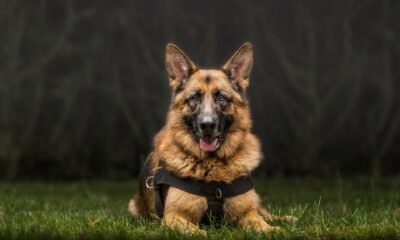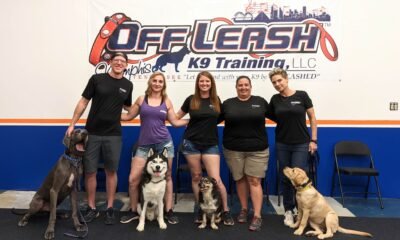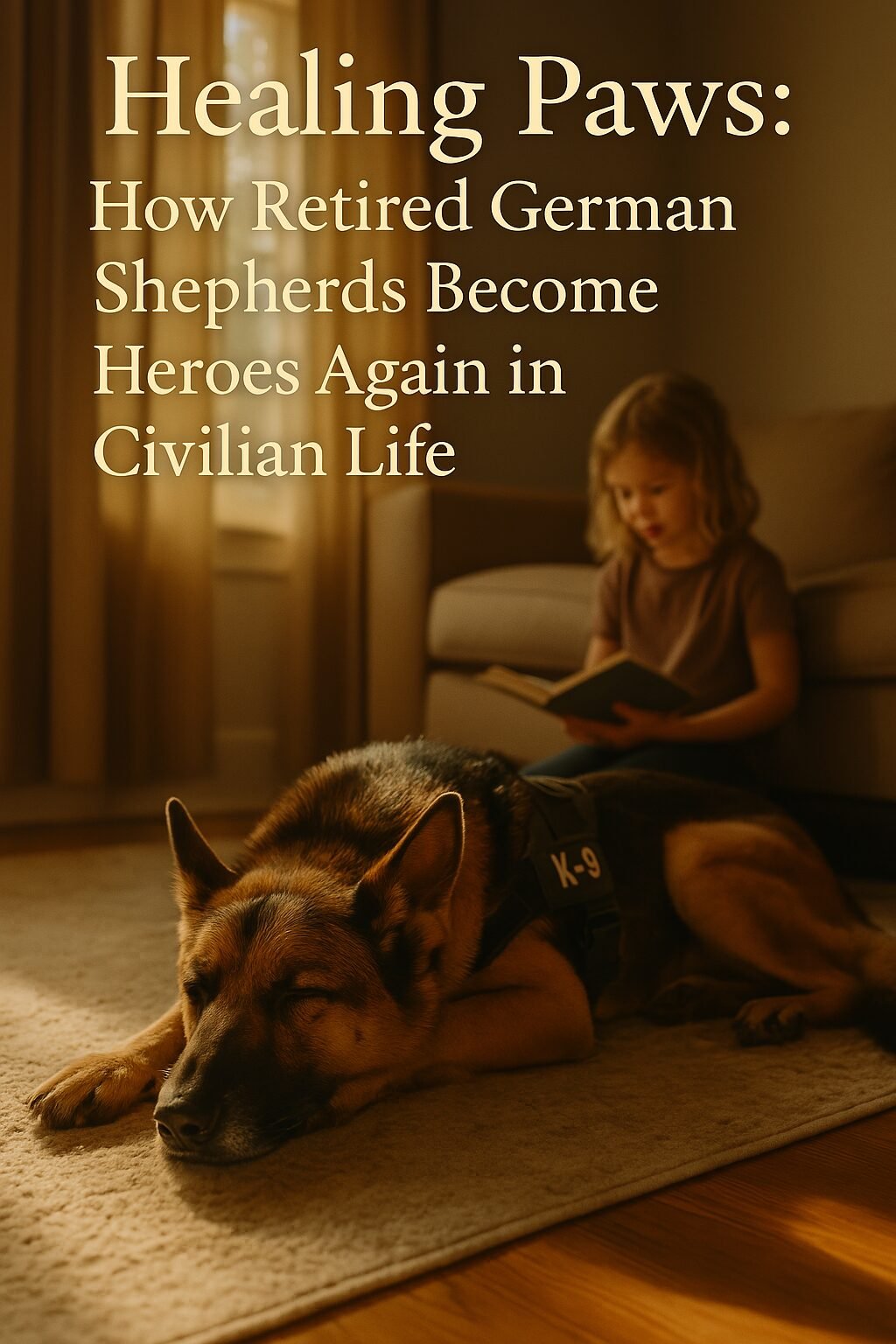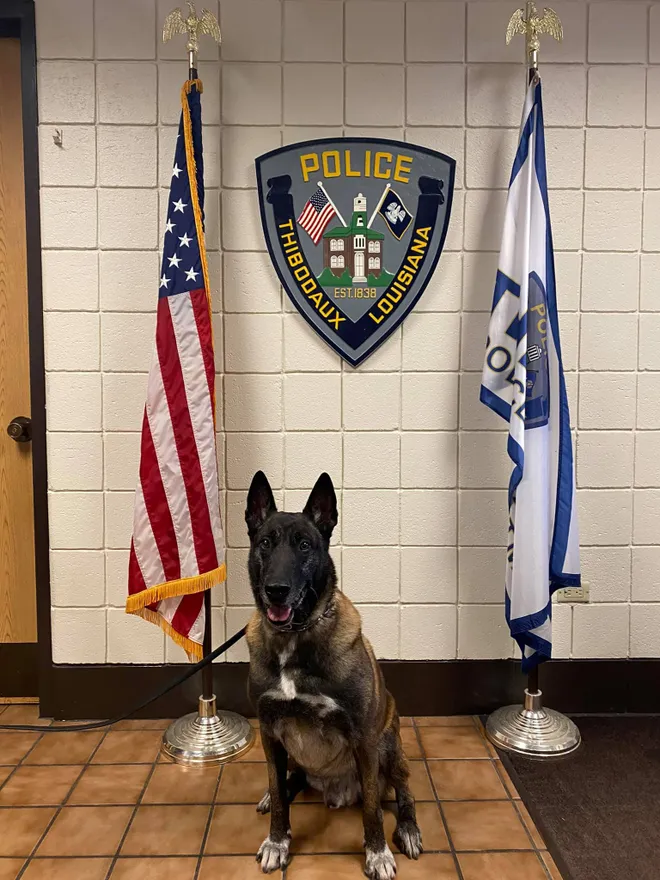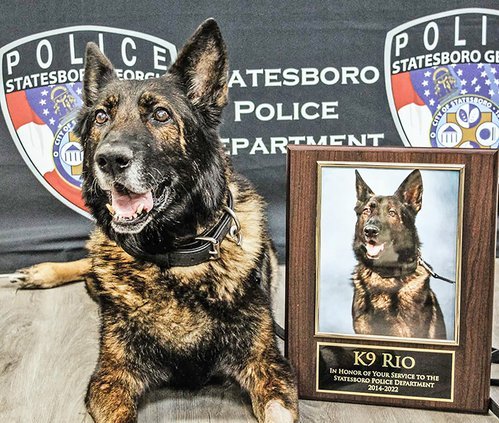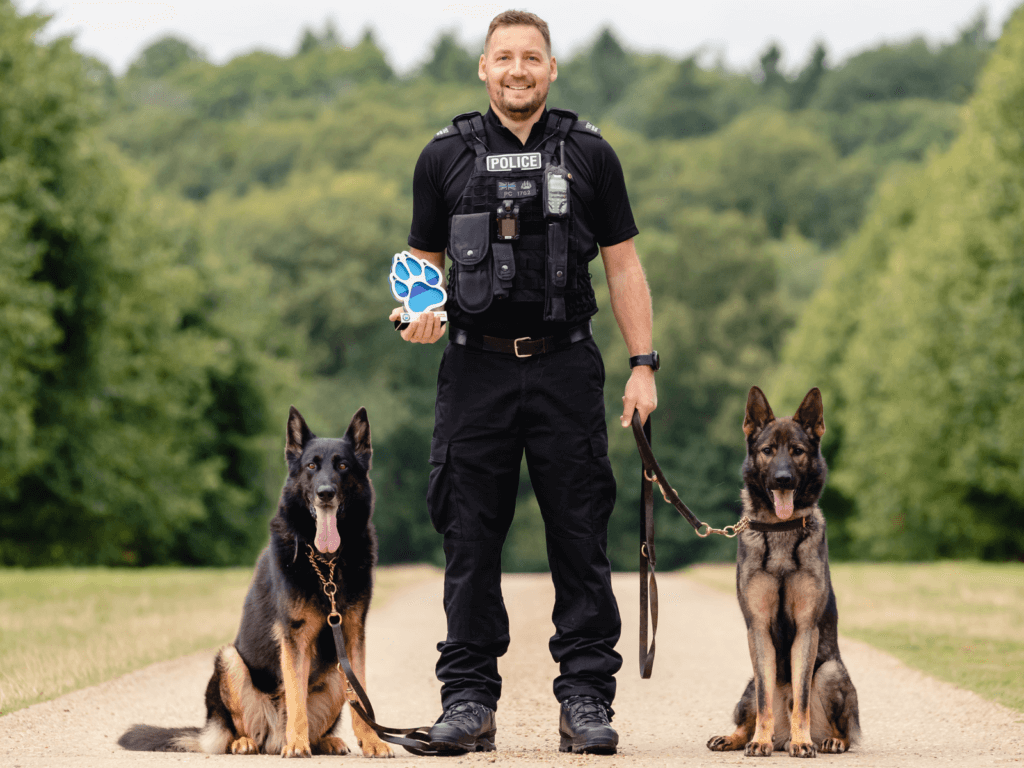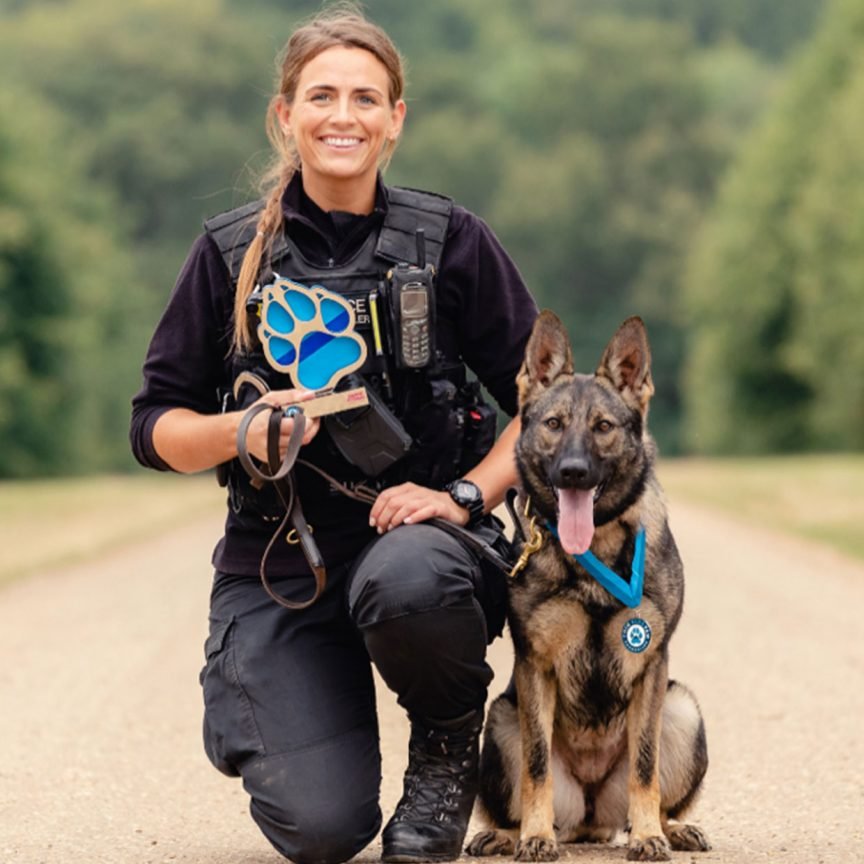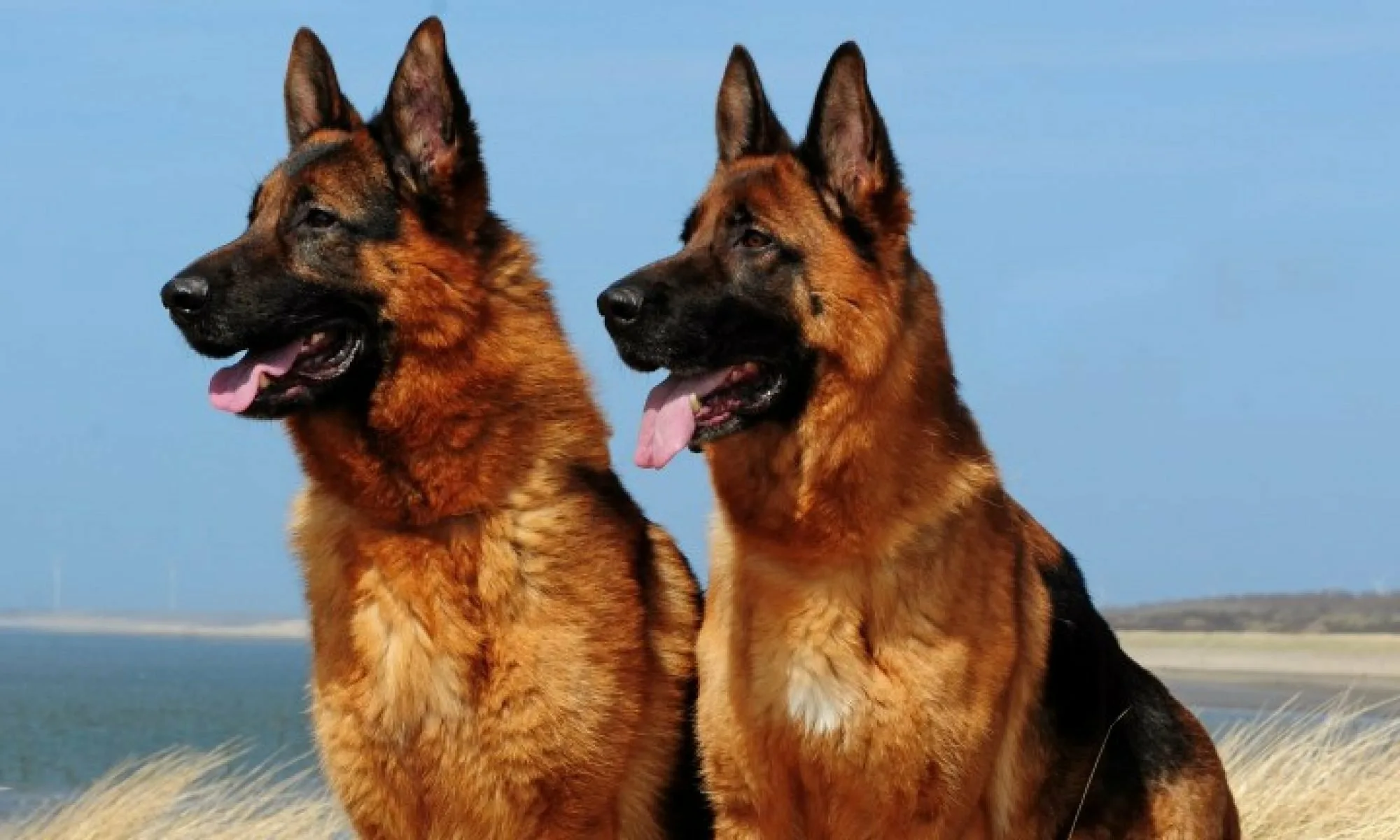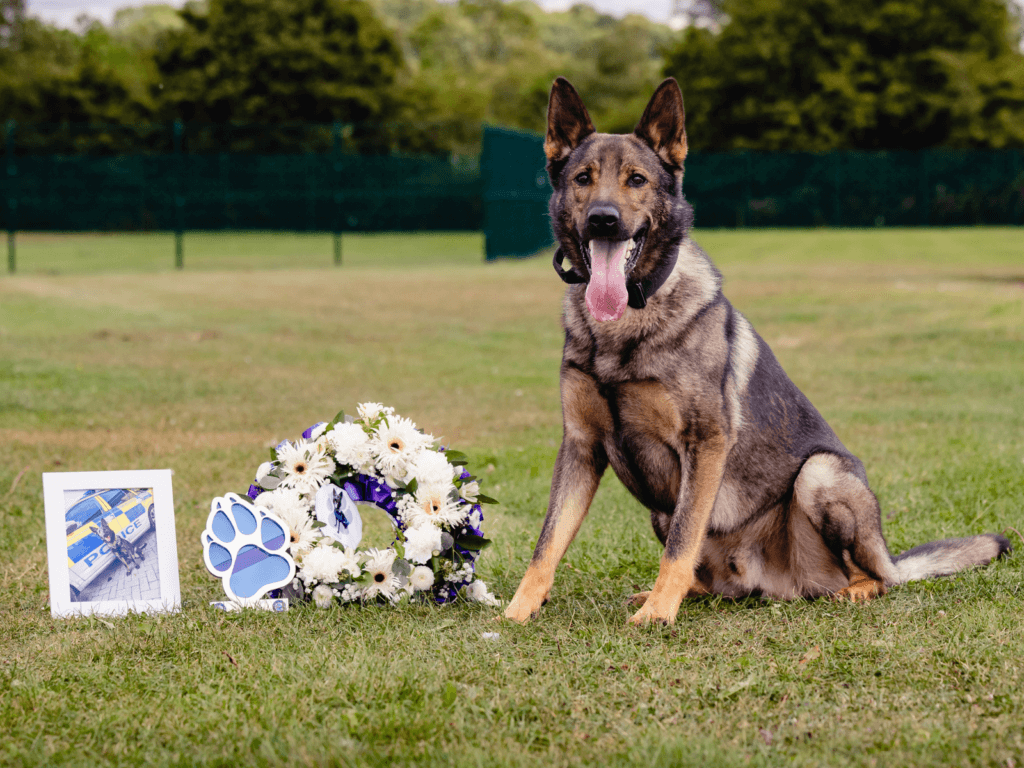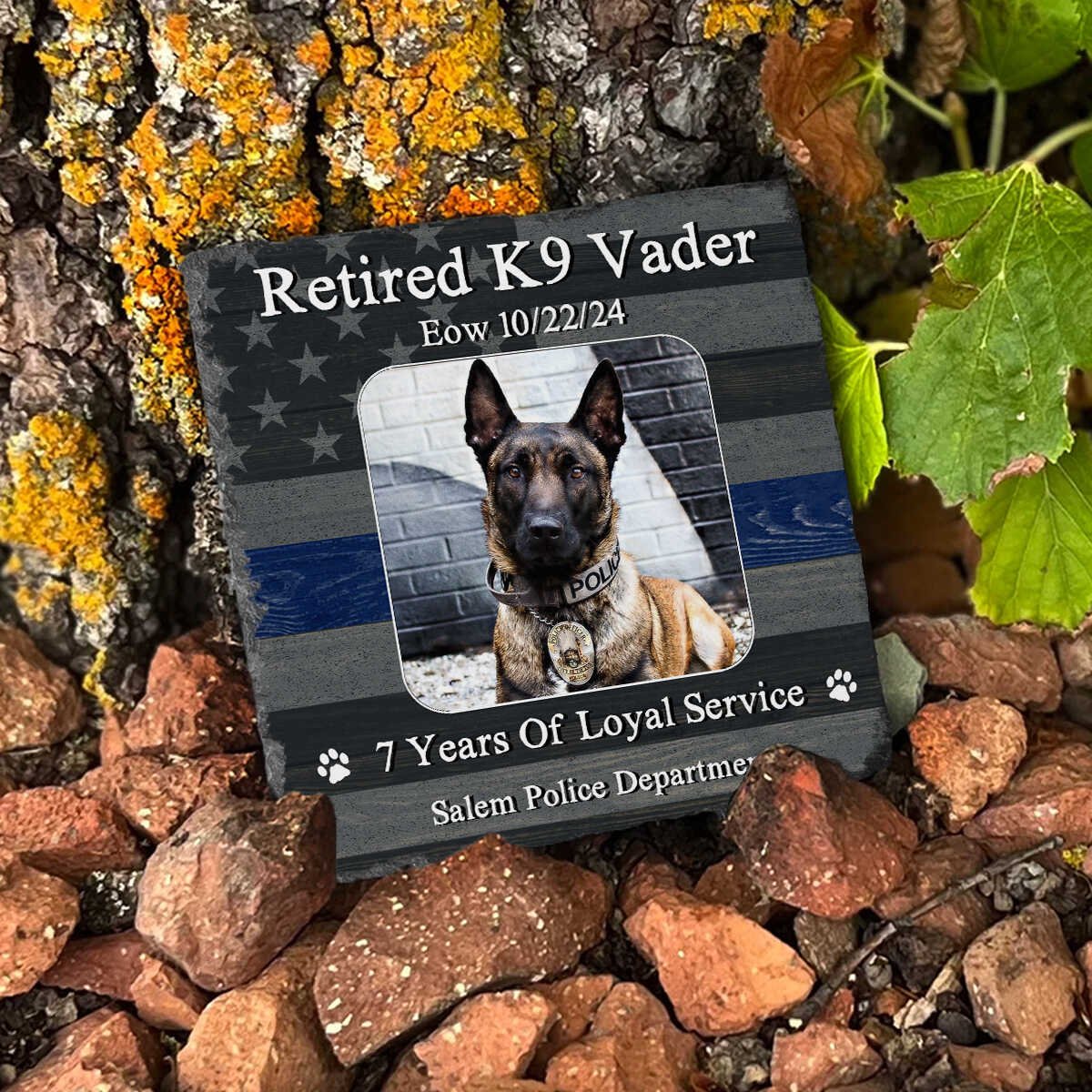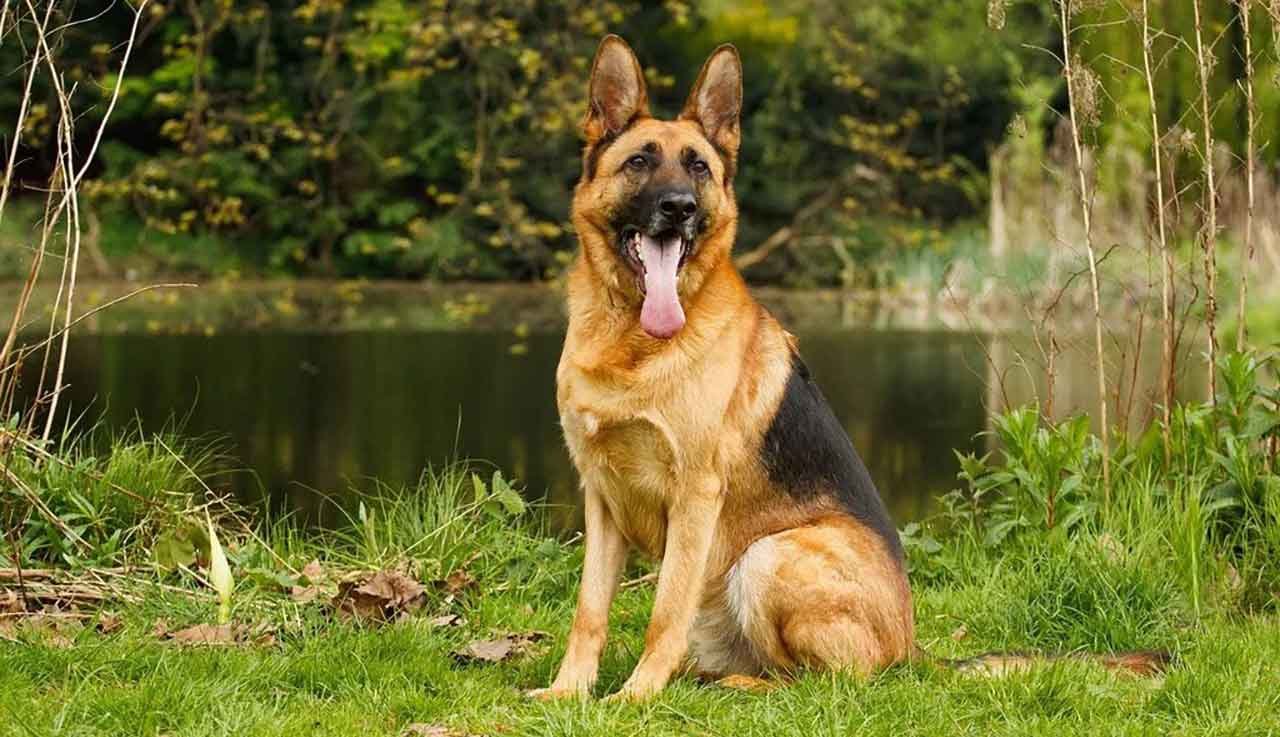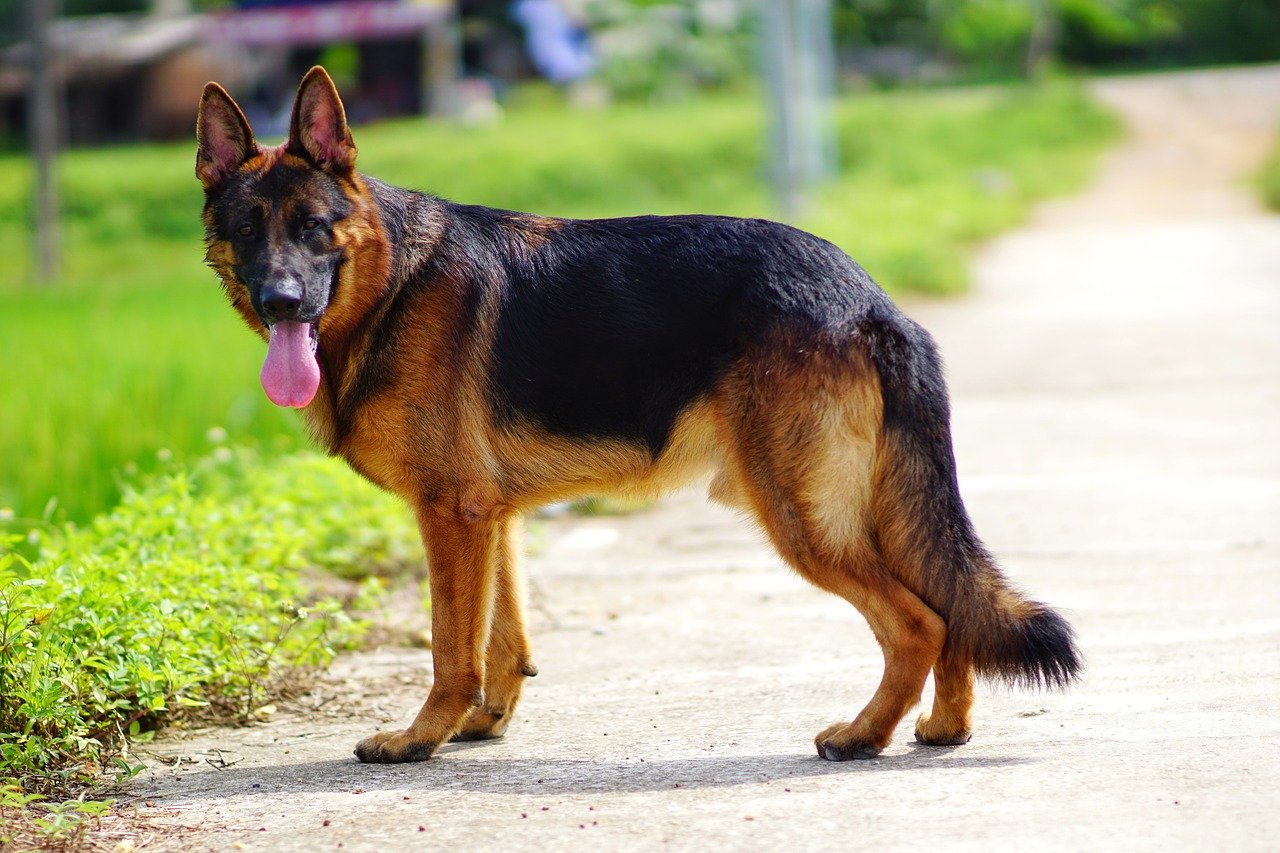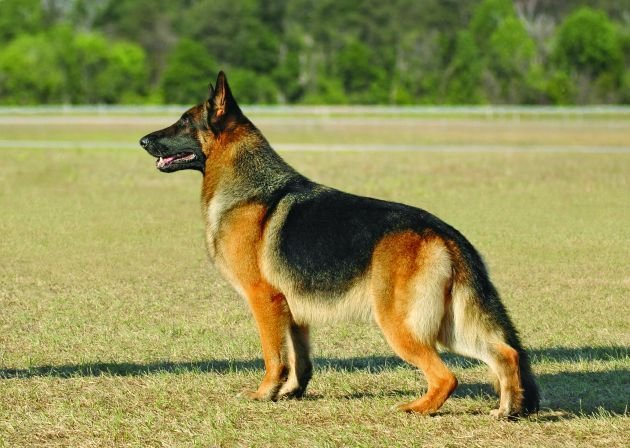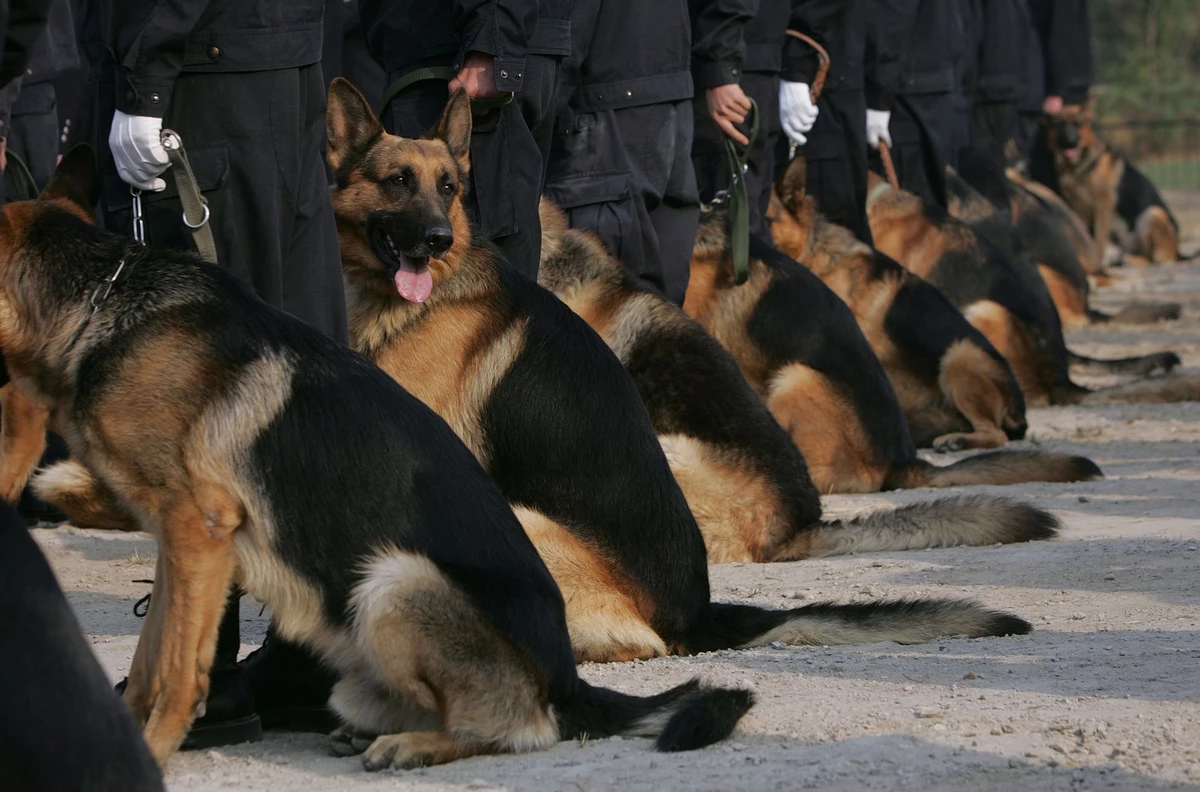Working Breeds
Born to Serve: The Working Spirit of German Shepherds in Police, Military & Therapy Roles

Part 5 of the German Shepherd Series on DogsReader
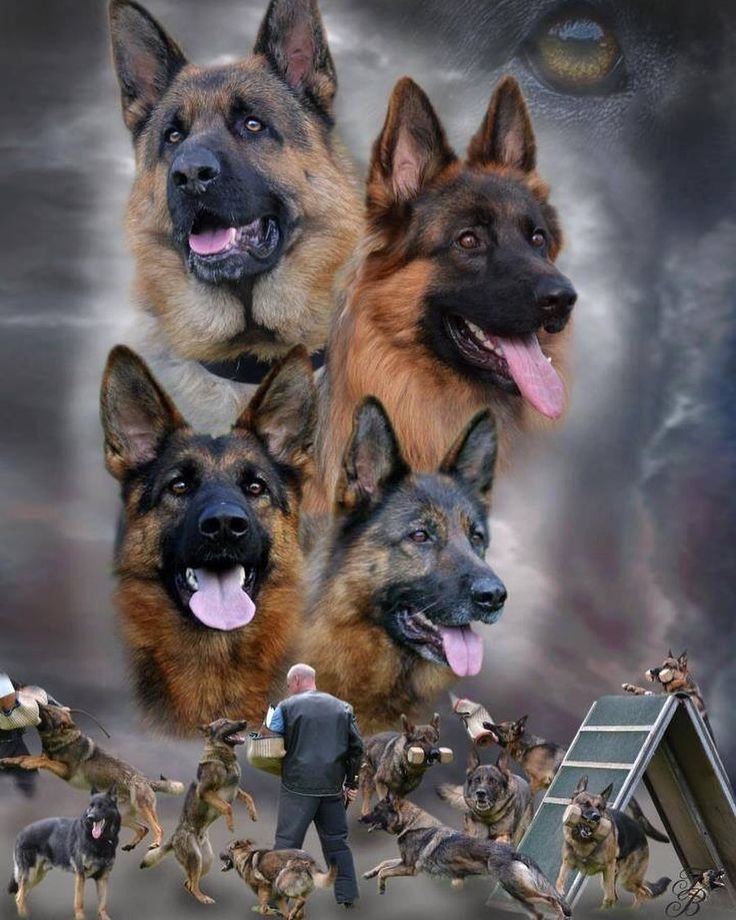
Introduction
Born to Serve: The German Shepherd is not just a companion—it’s a force of dedication, intelligence, and unmatched versatility. In this fifth chapter of the German Shepherd Series on DogsReader, we shine the spotlight on the breed’s working spirit—from the front lines with law enforcement and military to the calming presence they bring as therapy and service dogs. These dogs don’t just work; they thrive in roles that demand courage, loyalty, and mental strength.
Why German Shepherds Are Born to Work

The breed’s origin in 19th-century Germany was rooted in herding and guarding livestock, but their natural instincts quickly proved useful in human-centric working roles.
Key Traits That Make Them Ideal Working Dogs
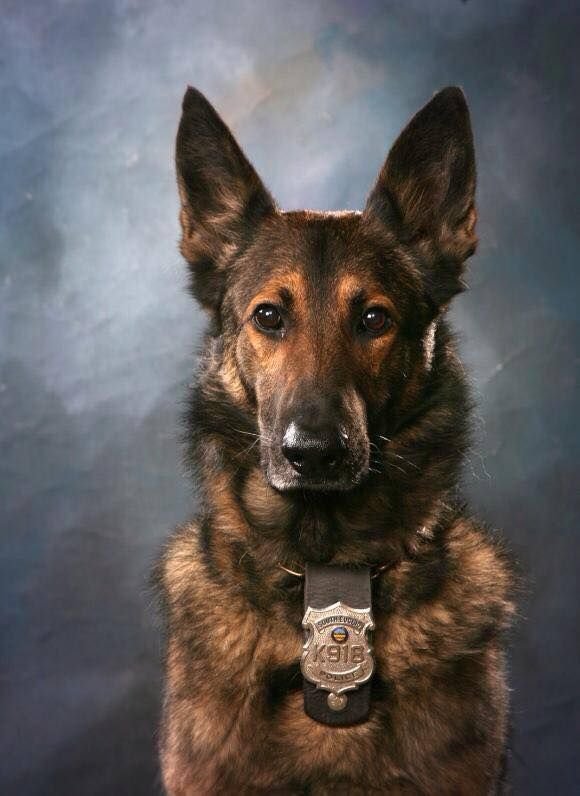
-
High intelligence and quick learning capability
-
Strong bond and loyalty to their handlers
-
Excellent scent detection and tracking abilities
-
Bravery under pressure
-
Superb trainability with sharp focus
-
Endurance and athleticism for demanding tasks
German Shepherds are truly wired to serve, and it shows in every real-life role they dominate.
1. K9 Police Dogs – Guardians of Public Safety
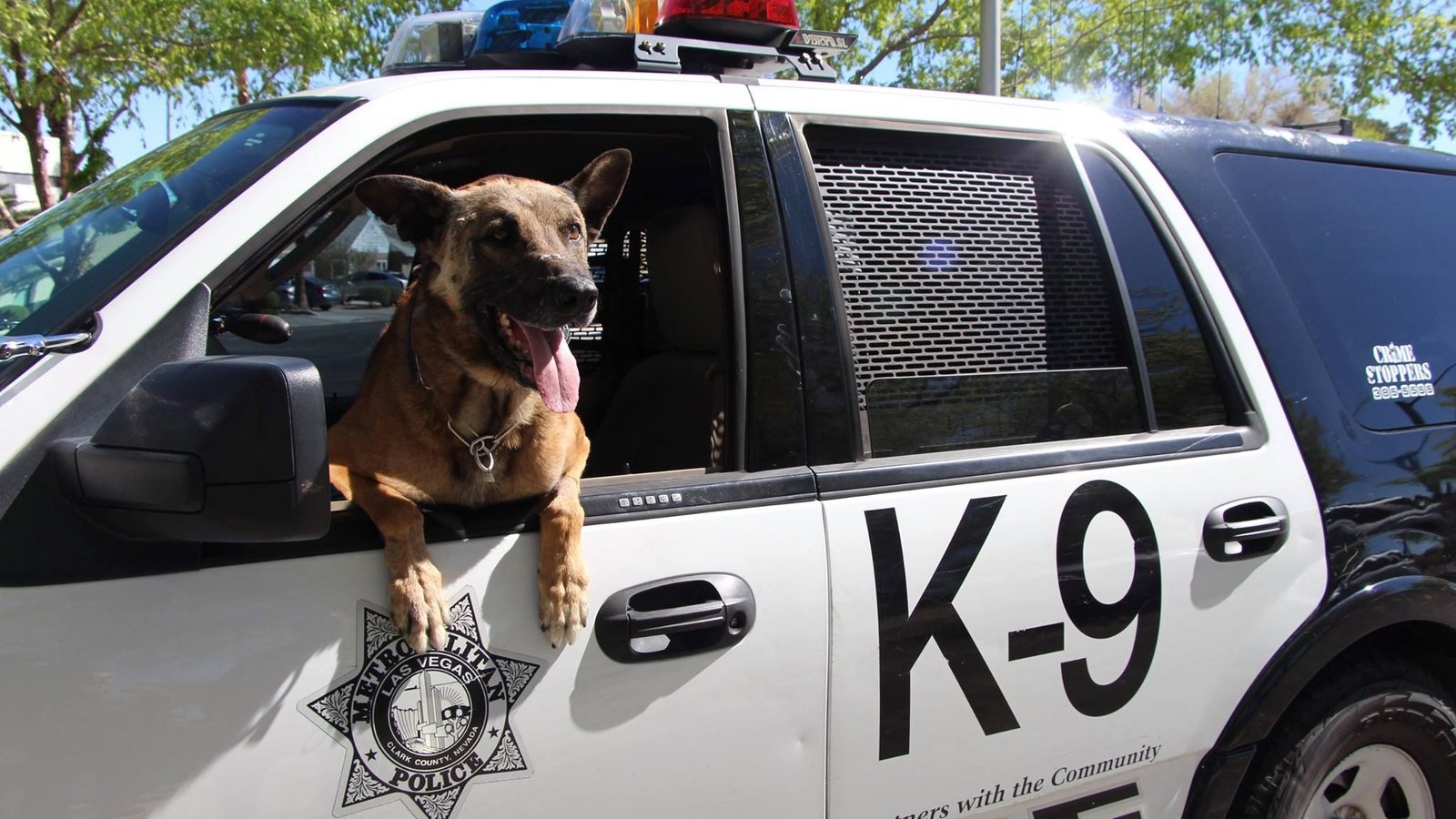
German Shepherds are among the most common breeds in law enforcement globally.
Common K9 Tasks:
-
Apprehending suspects
-
Drug detection (Narcotics K9)
-
Explosive detection (Bomb Squad K9)
-
Search and rescue operations
-
Crowd control during riots or protests
Their loyalty and obedience make them trusted partners for police officers. In many departments, officers refer to their German Shepherds as fellow officers, and they even receive ranks and honors post-service.
2. Military Dogs – Soldiers with Four Legs
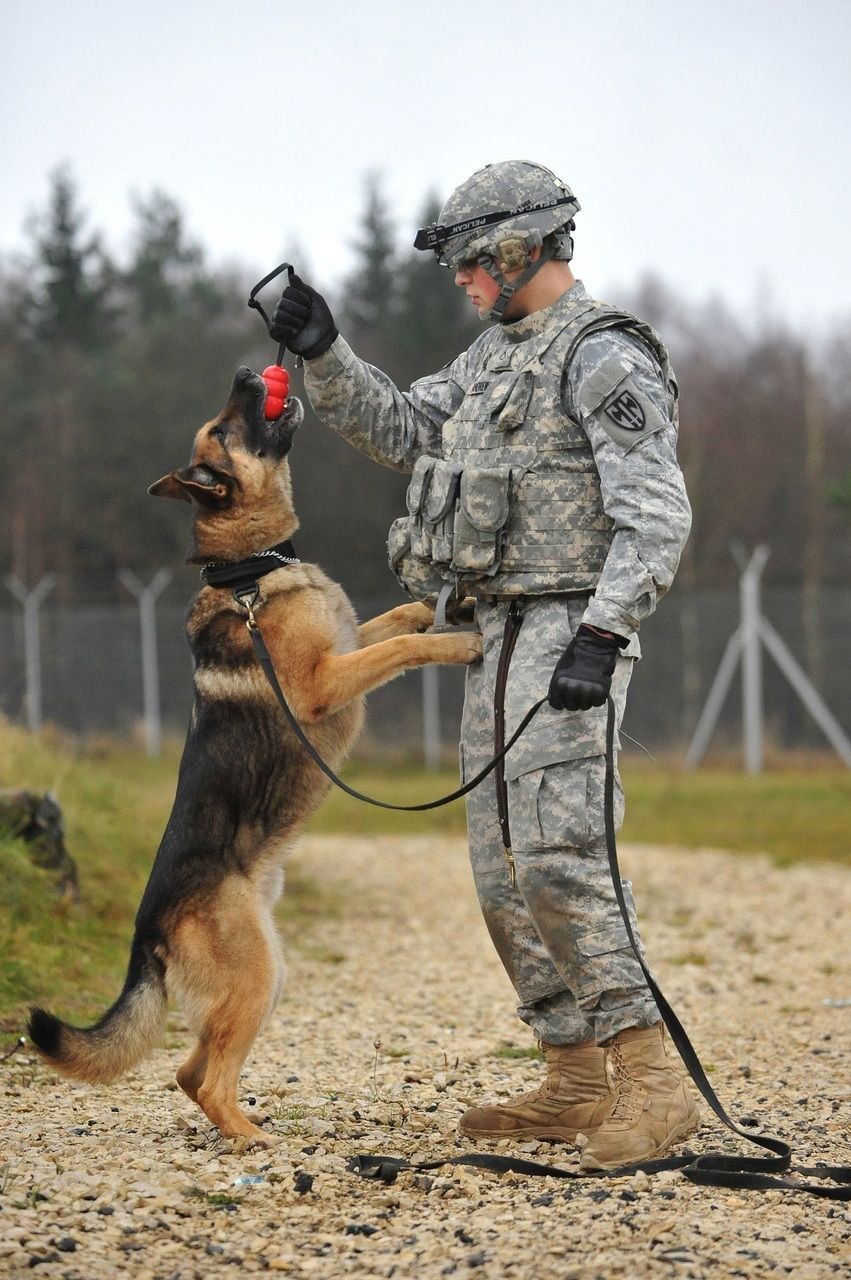
German Shepherds have been active in military service since World War I, used by German, American, British, and other forces worldwide.
Military Roles Include:
-
Tracking and scouting in combat zones
-
Explosives and mine detection
-
Messenger duties in warzones
-
Protecting military personnel and installations
These dogs are trained to stay calm in gunfire, explosions, and high–stress scenarios. Many become lifelong partners of the soldiers they serve beside—and often receive military honors and retirement ceremonies for their contributions.
3. Search and Rescue (SAR) – Heroes in Crisis
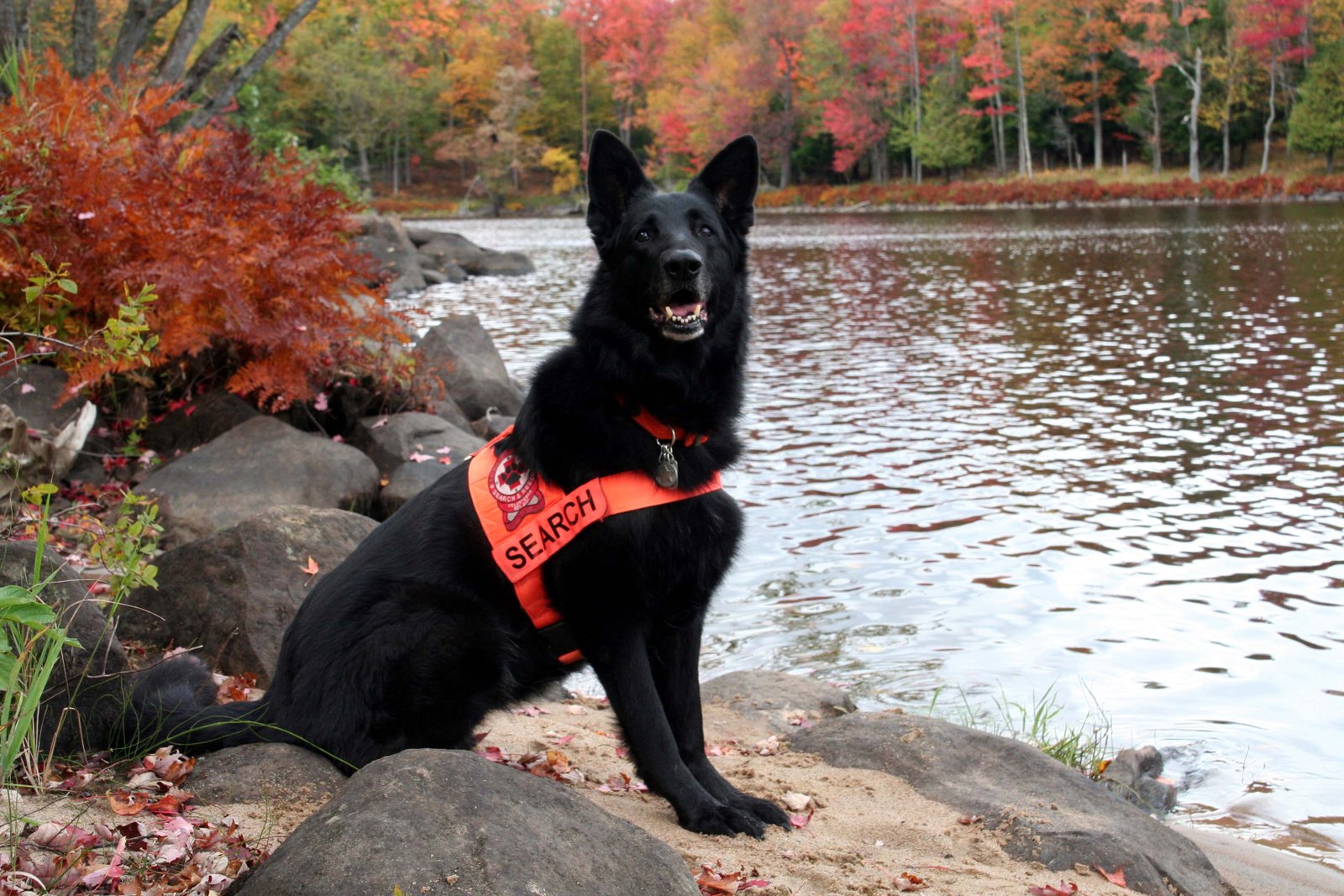
In natural disasters or missing person cases, time is critical. German Shepherds are trained to:
-
Locate trapped individuals in earthquake rubble
-
Track missing hikers in forests or snow
-
Help in floods, landslides, and avalanches
Their scenting ability and drive to complete a mission make them irreplaceable in crisis rescue teams.
4. Service Dogs – Assisting With Compassion

While Labradors and Goldens are often seen in service work, German Shepherds excel in specialized service roles, particularly where mobility, hearing, or medical alerts are required.
Common Roles:
-
Guide dogs for the visually impaired
-
Hearing dogs for the deaf
-
Medical alert dogs (for diabetes, seizures, etc.)
-
Mobility assistance dogs for veterans or elderly
Their balance of strength, gentleness, and alertness makes them ideal for service work. They are trained to remain calm, ignore distractions, and act fast when needed.
5. Therapy Dogs – Healing with Presence

German Shepherds also serve as emotional support and therapy dogs, particularly for:
-
PTSD patients
-
Children with autism
-
Hospital and hospice visits
-
Trauma victims
Their empathetic nature allows them to provide calm, reassuring support, and many handlers have shared how these dogs help people open up emotionally, often without a word being spoken.
Training That Builds Legends
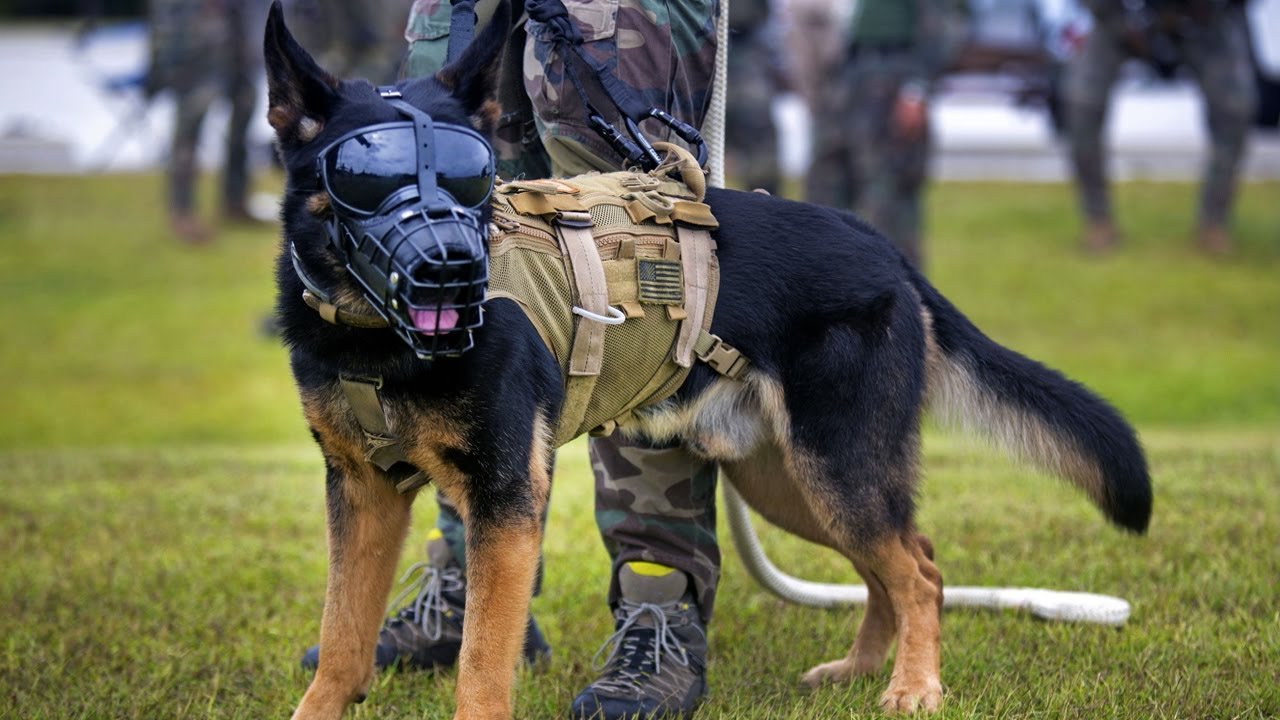
Working German Shepherds undergo intense training programs, often beginning as early as 8 weeks old.
Example Training Elements:
-
Obedience and impulse control drills
-
Scent detection training using real-world simulations
-
Agility and strength exercises
-
Handler bonding sessions
-
Public exposure and desensitization routines
Training can last 6 to 18 months, depending on the specialization. Only dogs with the right temperament and focus succeed—and those who do become living legends in service.
Life After Duty: Retirement for Working German Shepherds
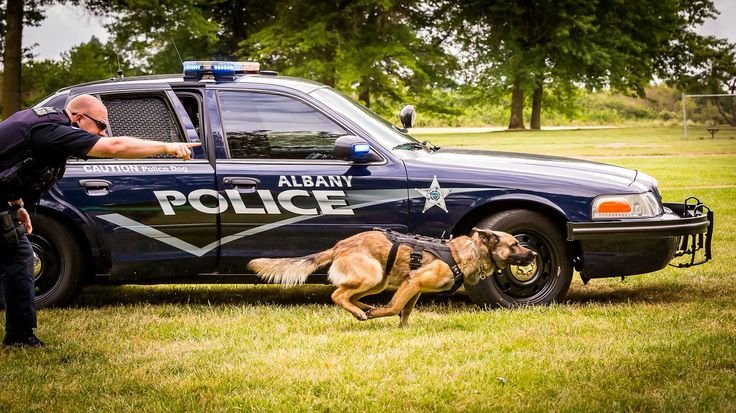
Most working German Shepherds retire between age 8 to 10. Many are adopted by their handlers or loving families. Retired police and military dogs often need therapy and adjustment support, as the stress of duty can affect them long after service.
At DogsReader, we salute these canine heroes. We also encourage adopting retired working dogs, as they are still capable of providing love, protection, and companionship.
Closing Statement
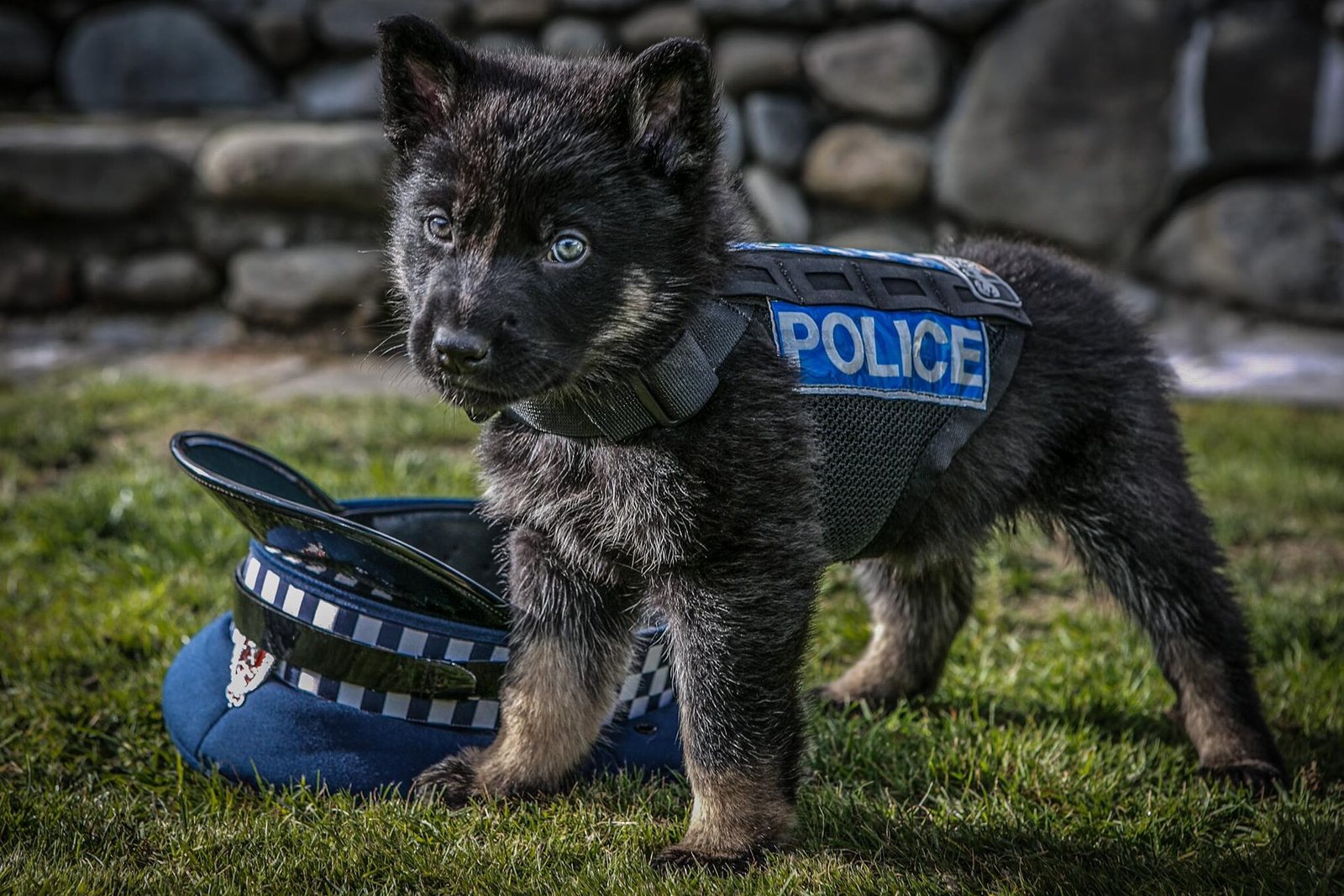
Whether it’s catching criminals, protecting soldiers, finding the lost, or healing invisible wounds, the German Shepherd has proven itself to be the world’s most trusted working dog. These roles are not just jobs—they are missions carried out with heart, skill, and unmatched loyalty.
This article is the fifth part of the German Shepherd Series on DogsReader, bringing you closer to understanding what makes this breed truly exceptional.
Explore more about this remarkable breed in our ongoing series—and remember, the DogsReader website features a 24/7 AI chatbot trained on AKC knowledge to answer all dog-related questions, including health and behavioral advice.
Subscribe to us on YouTube, follow DogsReader on Facebook and Instagram , and feel free to reach out at www.dogsreader.com. Your support helps us bring you more expert dog knowledge, training tips, and real-life stories that matter.
FAQs: The Working Spirit of German Shepherds in Police, Military & Therapy Roles

1. Why are German Shepherds so commonly used in police and military work?
German Shepherds excel in these roles due to their:
Intelligence – Ranked as the 3rd smartest dog breed
Strength & Agility – Powerful build with high endurance
Loyalty & Trainability – Eager to please and quick learners
Strong Nose – Superior scent detection for drugs, bombs, and suspects
2. What specific jobs do German Shepherds perform in law enforcement?
- Patrol Work – Apprehending suspects, crowd control
- Detection – Sniffing out narcotics, explosives, or cadavers
- Search & Rescue – Finding missing persons in disasters
- Tracking – Following scent trails over long distances
3. How are military German Shepherds trained differently from police dogs?
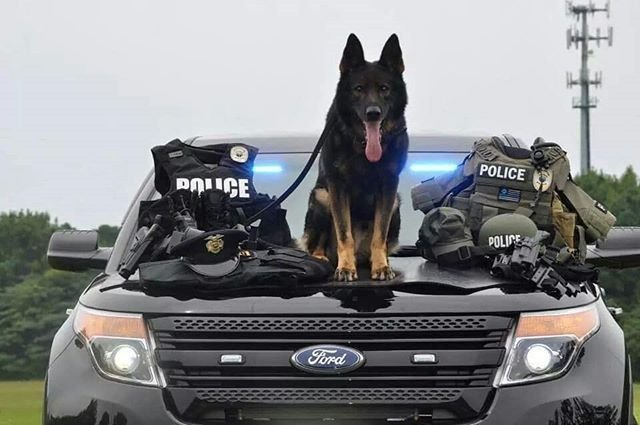
Military GSDs often learn:
- Silent Commands (Hand signals for covert ops)
- Parachute Insertions – Training to jump from aircraft
- Combat Skills – Protecting handlers in war zones
- Explosive Detection – More intensive than civilian training
4. Can German Shepherds be effective therapy or service dogs?
Absolutely! Their versatility extends to:
- Therapy Work – Comforting hospital patients or trauma victims
- Service Roles – Assisting people with disabilities (guide dogs, mobility support)
- PTSD Support – Helping veterans with anxiety and grounding techniques
5. What traits make German Shepherds ideal for high-stress jobs?
- Courage – Fearless in dangerous situations
- Focus – Ability to work amid distractions
- Adaptability – Perform in varying environments (urban, forest, desert)
- Strong Bond with Handlers – Deep loyalty ensures reliability
6. How long does it take to train a working German Shepherd?
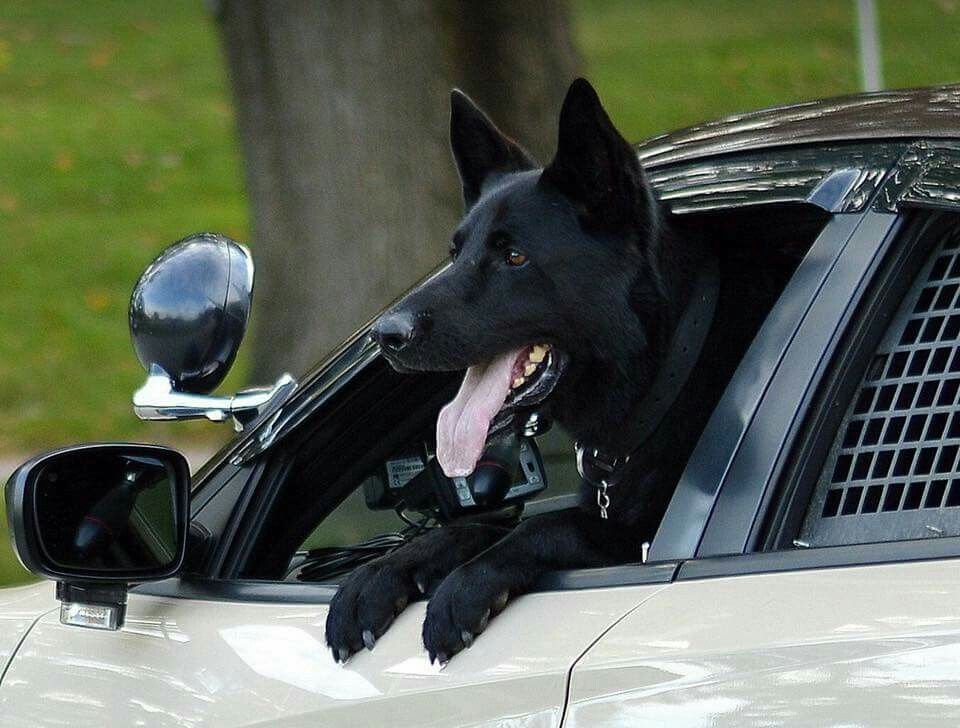
- Basic Obedience: 4–6 months
- Specialized Training (K9, SAR, etc.): 6–12 months
- Military/Elite Roles: Up to 2 years
7. Do all German Shepherds have the temperament for work?
No—only dogs with:
Stable Nerves (Not easily startled)
High Drive (Motivated by toys, praise, or rewards)
Confidence (No excessive fear/aggression)
8. What happens to retired police/military German Shepherds?
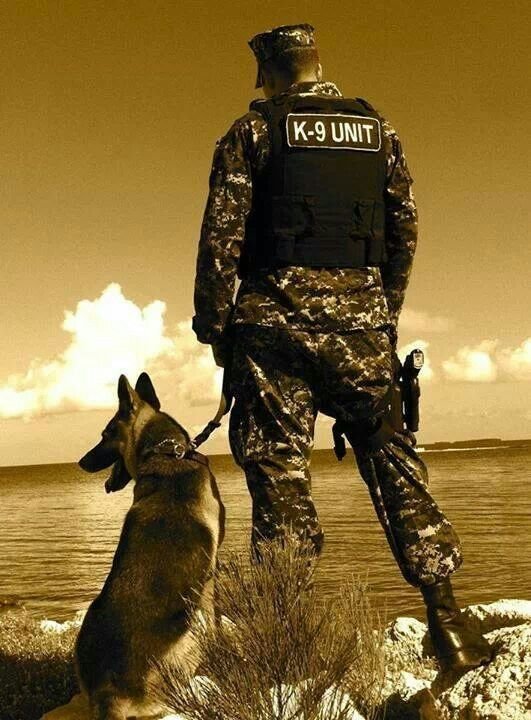
- Adopted by Handlers – Common if the dog bonds closely
- Rehomed to Families – After temperament screening
- Sanctuary Care – For dogs with medical needs
9. How can I tell if my German Shepherd has working potential?
Signs include:
- High Energy & Play Drive
- Problem-Solving Skills
- Strong Focus on Tasks
- Confidence in New Environments
10. Can pet German Shepherds learn working dog skills?

Yes! While not all are elite material, you can teach:
- Scent Games (Hide treats for tracking practice)
- Basic Protection Commands (“Watch” or “Guard”)
- Agility Training – Builds discipline and fitness
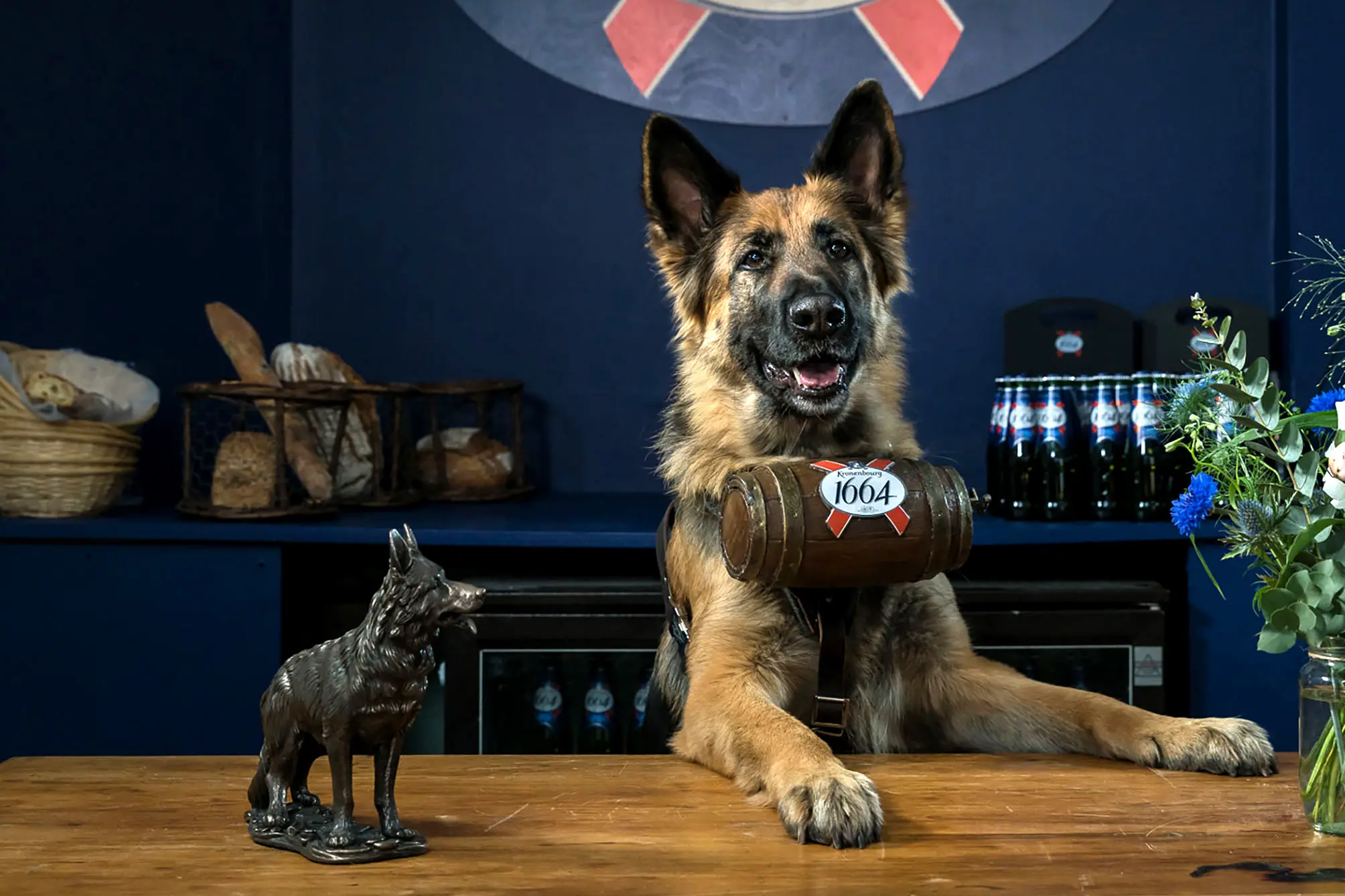
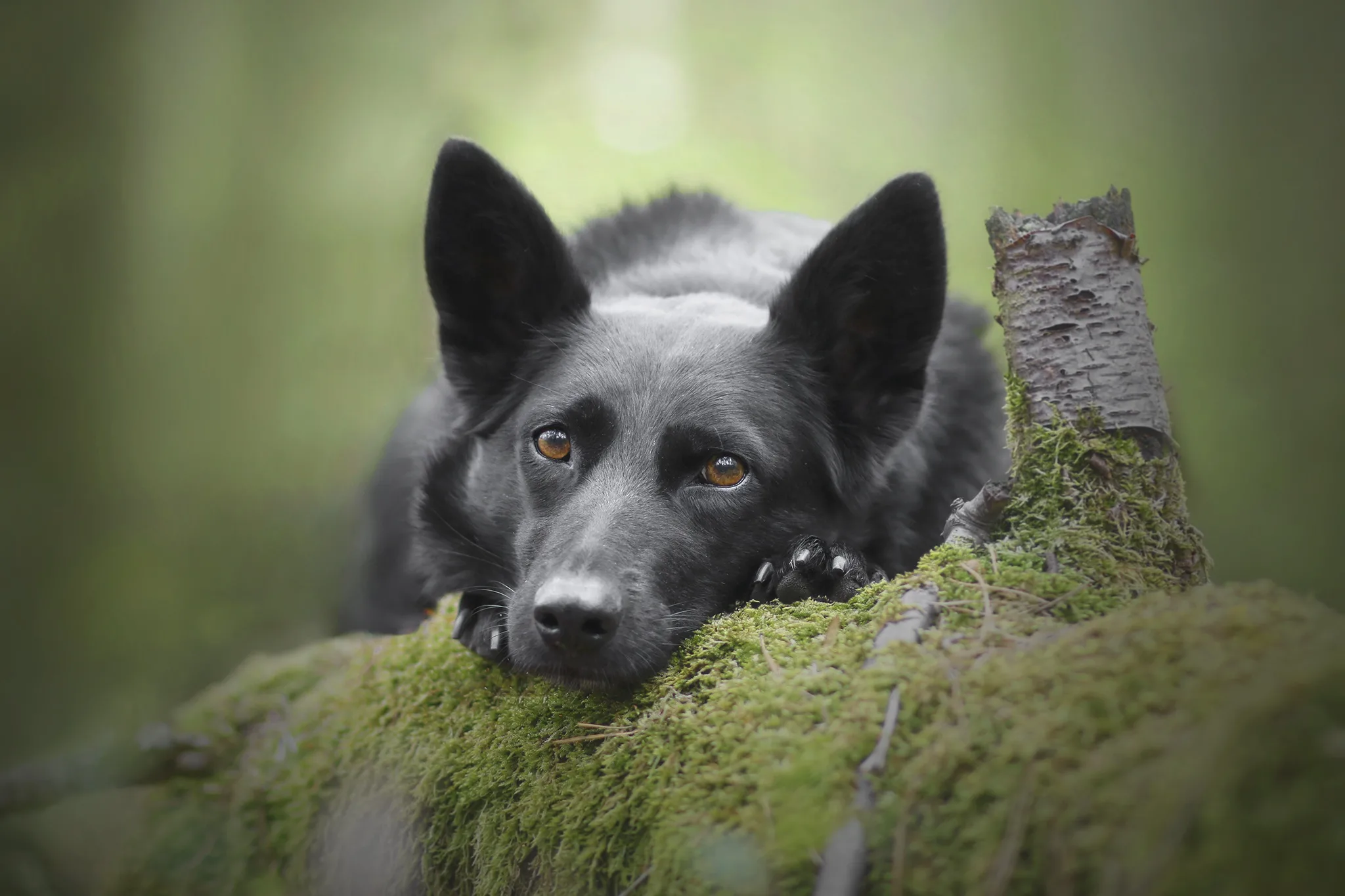
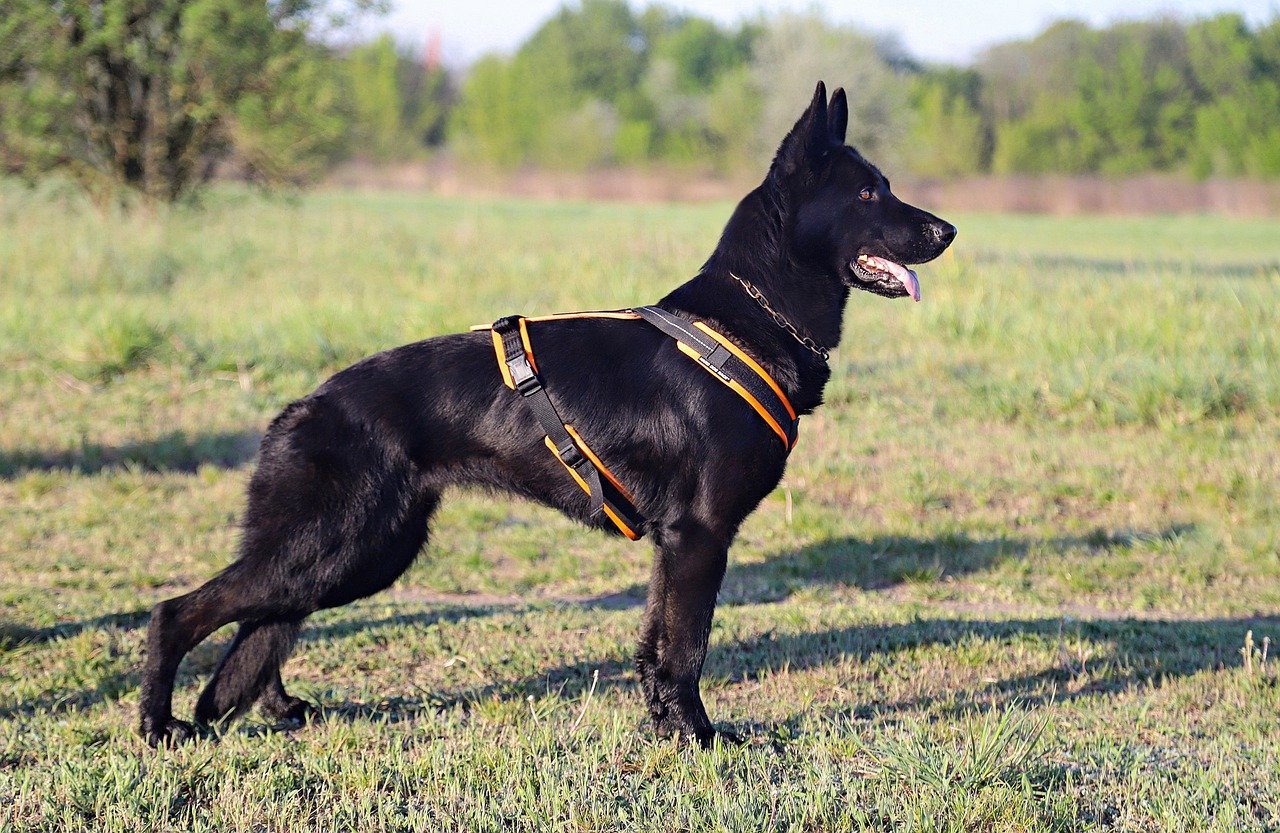
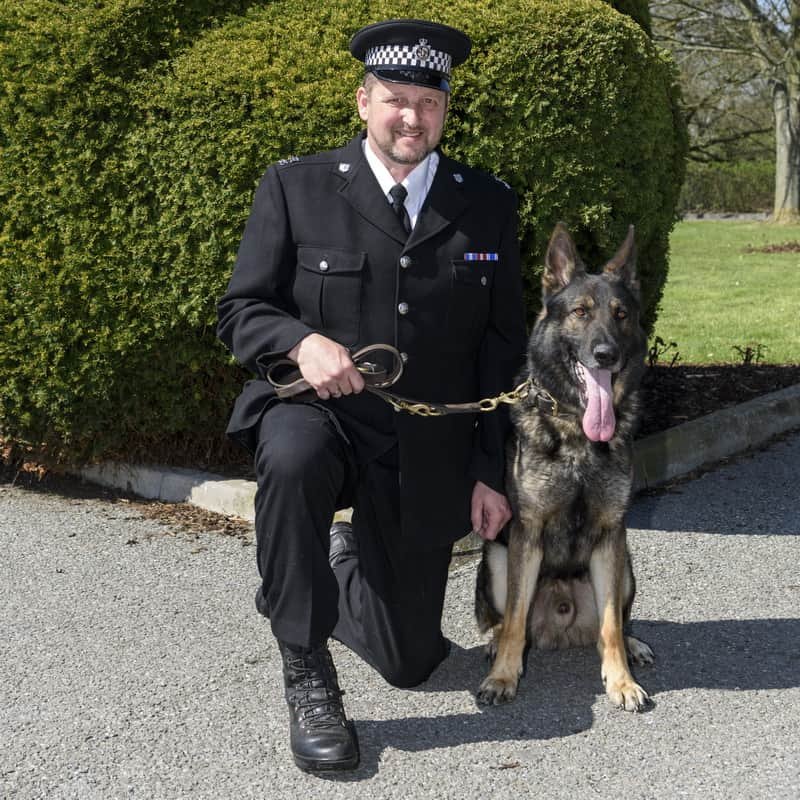


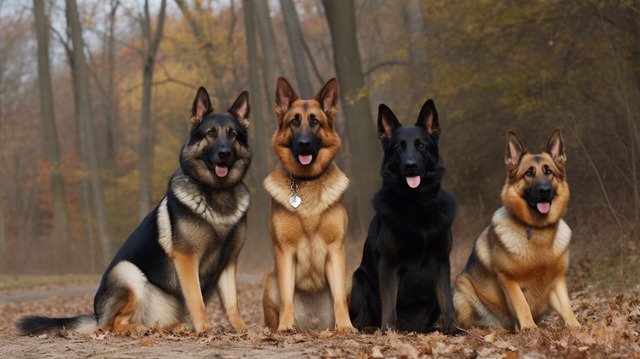
Working Breeds
German Shepherd Intelligence: Uncovered Mind, Memory, and Mental Mastery

📍 Part 14 of the German Shepherd Series on DogsReader
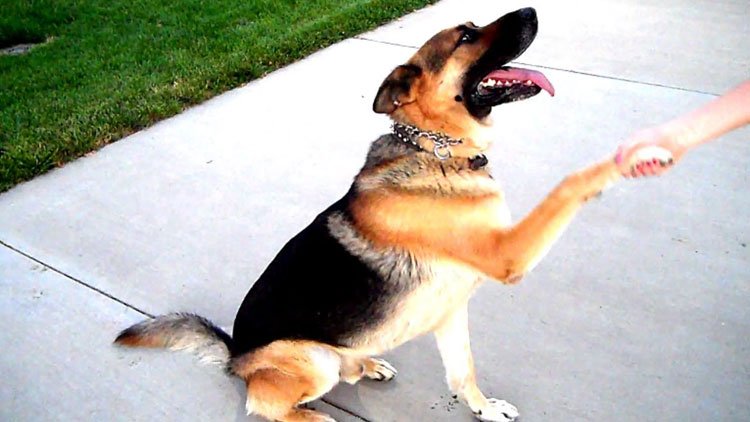
Introduction: Why German Shepherds Are Considered Canine Geniuses
German Shepherd Intelligence : German Shepherds aren’t just working dogs — they’re intellectual powerhouses. From police forces to therapy roles, their brainpower is what sets them apart. In this 15th installment of the DogsReader German Shepherd Series, we uncover the layers of intelligence that make the breed one of the most trainable and dependable dogs in the world.
Mental Capacity: Ranking the German Shepherd’s Intelligence
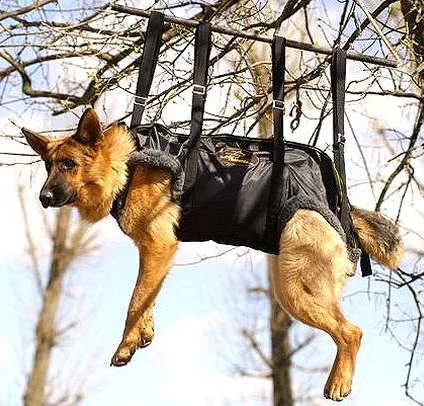
According to renowned canine psychologist Stanley Coren, German Shepherds rank 3rd among the most intelligent dog breeds, right after the Border Collie and Poodle. But their intelligence is not just about performing tricks — it includes:
-
Working Intelligence: Quick command response time
-
Adaptive Intelligence: Problem-solving based on real-life experiences
-
Instinctive Intelligence: Natural ability to guard, herd, and protect
Short-Term Memory vs. Long-Term Memory in GSDs
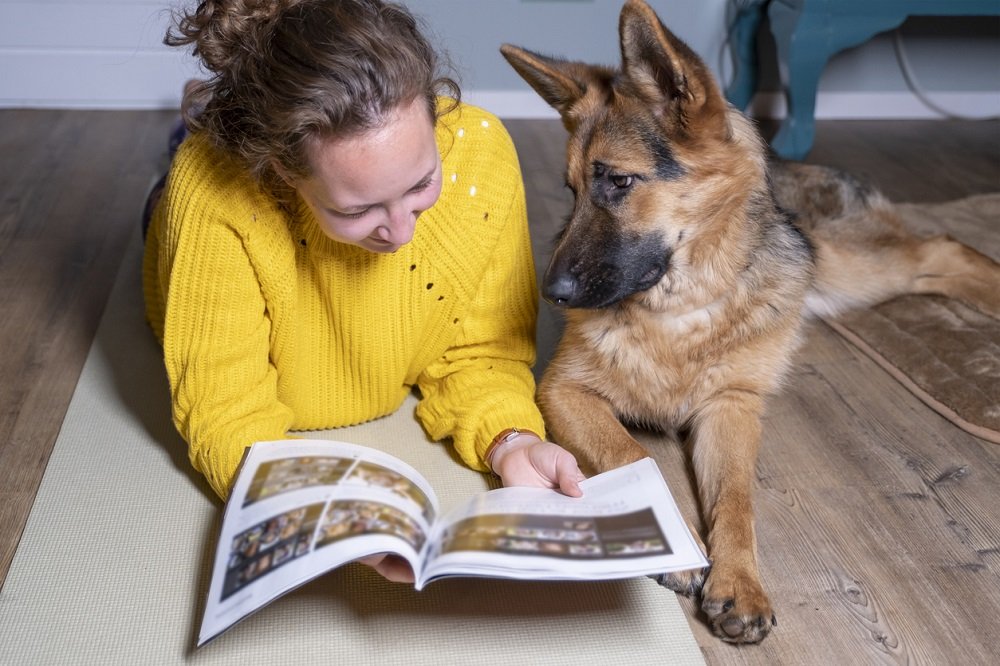
German Shepherds are capable of retaining both short-term and long-term memories.
-
Short-Term Memory: Allows them to react and learn commands within seconds
-
Long-Term Memory: Enables them to remember people, places, and training even after months or years
➡️ This is why military and police units invest in them – their memory retention is unmatched.
Mind Mapping & Cognitive Training

GSDs have the ability to mentally “map” their environment. With consistent training, they learn:
-
Names of toys and family members
-
Task sequences in protection or obedience routines
🧠 Mental stimulation is just as important as physical exercise. Neglecting either can lead to behavioral issues.
Examples of Mental Mastery in Real Life

Here are true-to-life demonstrations of the breed’s cognitive excellence:
-
A retired K9 officer named Max once tracked a missing child 2 miles away using only a blanket as a scent source.
-
Luna, a therapy German Shepherd, learned to recognize anxiety attacks in her owner before visible symptoms occurred.
-
In competitive obedience, German Shepherds consistently outperform other breeds in multi-step routines.
Best Brain Games to Unlock Full Potential

-
Find the Treat: Enhances scent memory and reward-driven focus
-
Puzzle Toys: Keeps their problem-solving skills sharp
-
Name That Toy: Teach them toy names for vocabulary expansion
-
Hide and Seek: Stimulates hunting instincts and recall memory
-
Command Chains: Train your dog to follow multi-step commands
💡 DogsReader Tip: Change up the difficulty level every week to avoid cognitive stagnation.
How to Identify Cognitive Decline Early
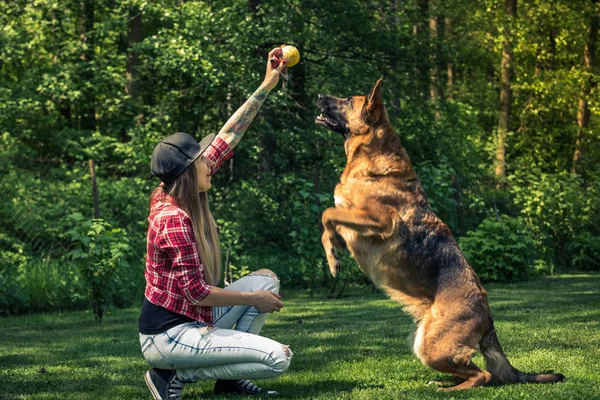
Even the smartest dogs age. Watch for signs such as:
-
Hesitation in routine tasks
-
Forgetting commands
-
Disorientation in familiar environments
-
Increased anxiety or restlessness
📌 Early diagnosis leads to better mental wellness treatment — explore our upcoming article on “Senior Care for German Shepherds.”
Closing Statement : The Mental Marvel That Is the German Shepherd

Their intelligence is not just in obedience — it’s in their emotional depth, decision-making ability, and working dedication. From pup to elite performer, a German Shepherd’s brain deserves to be nurtured just as much as their body.
📢 This is Part 14 of the German Shepherd Series on DogsReader
Discover all parts of the series and exclusive dog care knowledge on our website.
🐶 Visit: www.dogsreader.com
📩 Ask our 24/7 Dog Chatbot anything – trained with official AKC knowledge!
📧 Contact: dogsreaders@gmail.com
📱 Follow us on Facebook & Instagram [Subscribe to us on YouTube | Facebook | Instagram | www.dogsreader.com]
▶️ Subscribe to us on YouTube!
FAQs
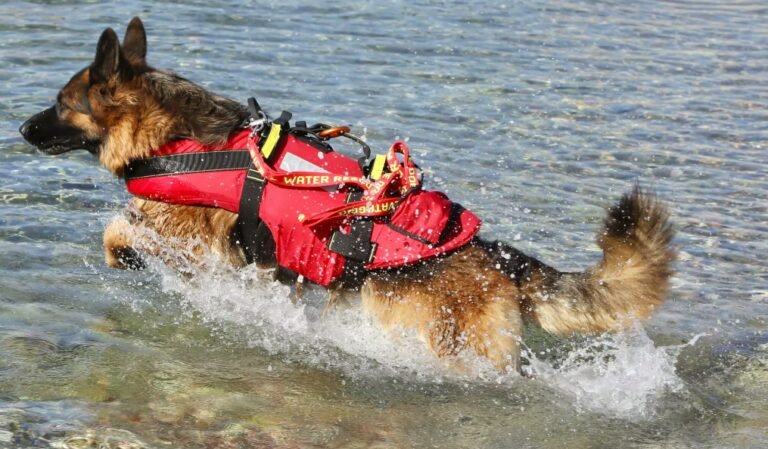
“German Shepherd Intelligence Uncovered: Mind, Memory, and Mental Mastery”
1. Are German Shepherds really smarter than other dog breeds?
Yes, German Shepherds are ranked as the third most intelligent dog breed in the world. Their quick learning, emotional intelligence, and memory retention make them top performers in obedience, protection, and service roles.
2. How intelligent is a German Shepherd compared to a human?
A well-trained adult German Shepherd has cognitive skills comparable to a 2.5 to 3-year-old human child. They understand hundreds of words, can follow multi-step commands, and even interpret emotions.
3. Can German Shepherds remember their owners after years?
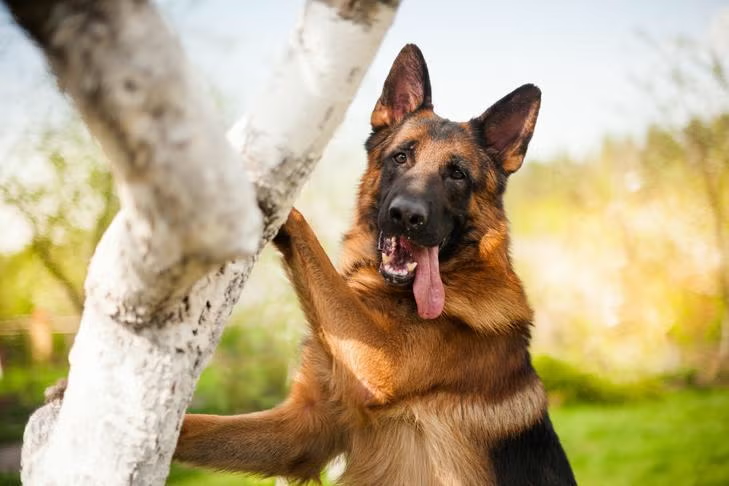
Absolutely. Thanks to their strong long-term memory, German Shepherds can remember their owners, voices, and environments even after being separated for several years.
4. What kind of mental games do German Shepherds like?
German Shepherds enjoy puzzle toys, scent games, name-learning challenges, and hide-and-seek. These games stimulate their brain, reduce anxiety, and prevent boredom-related behaviors.
5. Do German Shepherds have better memory than other breeds?
Yes. Their working memory and adaptive intelligence are superior to many other breeds, which is why they excel in military, police, and therapy roles.
6. How can I test my German Shepherd’s intelligence at home?
Simple games like “which hand has the treat,” toy name recognition, or obstacle challenges can help test your German Shepherd’s problem-solving ability and memory recall at home.
7. How much mental stimulation does a German Shepherd need daily?

A German Shepherd needs at least 30–45 minutes of mental enrichment daily in addition to physical exercise. Without it, they can become restless, destructive, or depressed.
8. Can German Shepherds suffer from memory loss or dementia?
Yes, senior German Shepherds can develop Canine Cognitive Dysfunction (CCD), similar to dementia in humans. Early signs include confusion, changes in sleep, and forgetting commands.
9. What is the best age to start brain training for a German Shepherd puppy?
You can begin simple mental games and memory exercises as early as 8 weeks old. Start with basic commands and short tasks, then gradually increase difficulty.
10. How do police German Shepherds train their memory so well?
They undergo repetition-based and scenario-driven training that conditions them to remember commands, scents, routines, and locations even under stress or distraction.
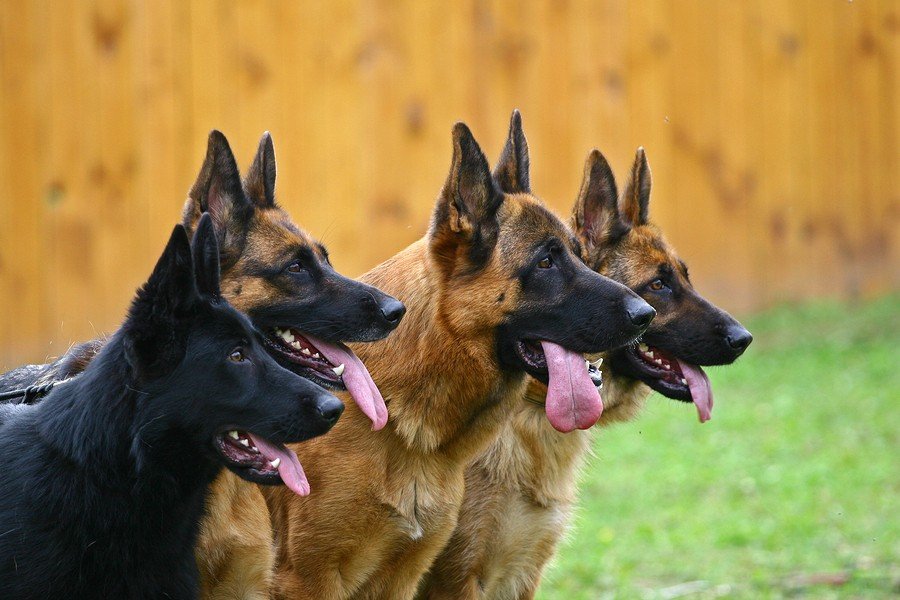
Working Breeds
Healing Paws: How Retired German Shepherds Become Heroes Again in Civilian Life
Working Breeds
Training for Transition: Preparing Working Dogs for Life After Service
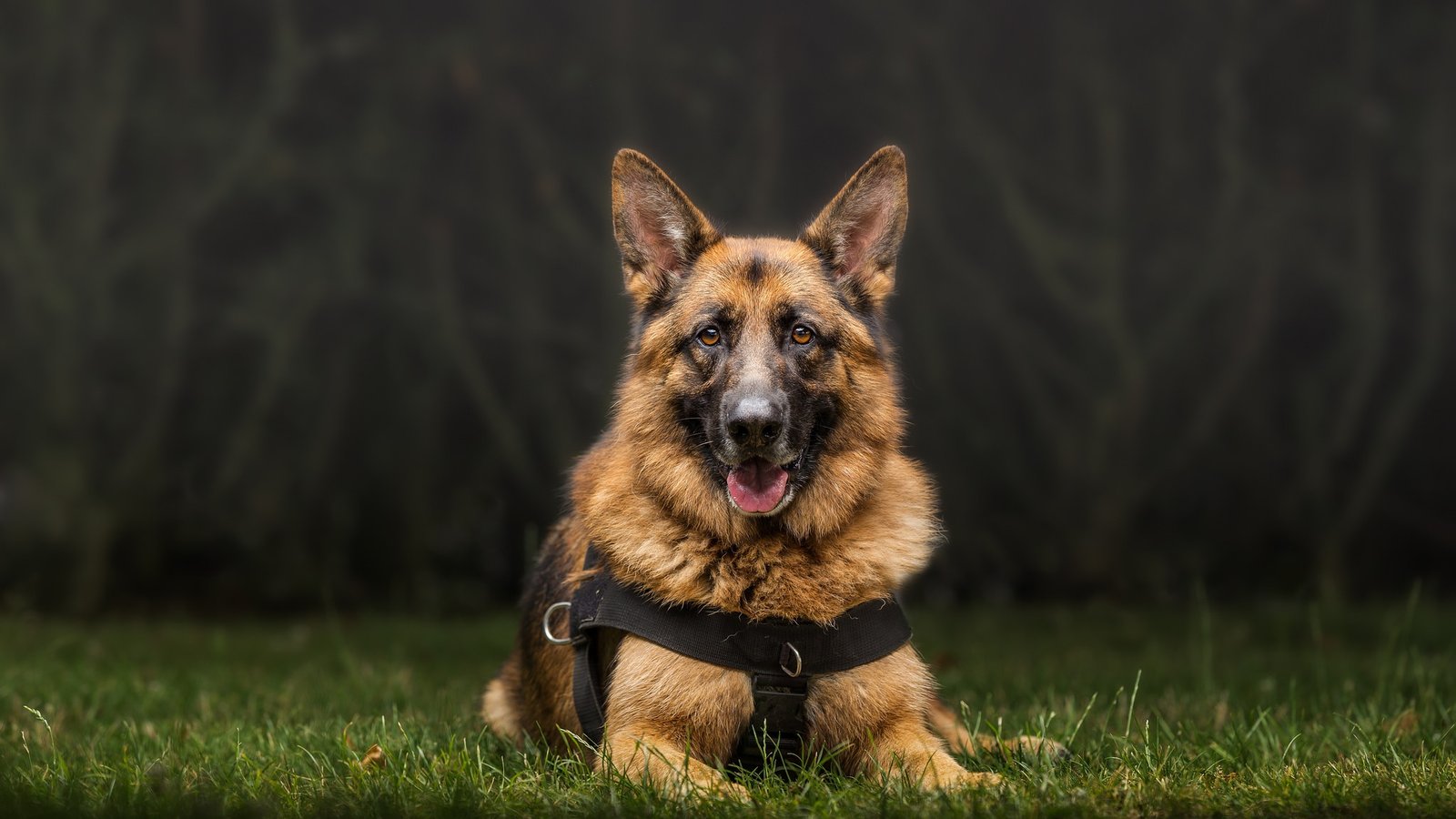
Part 12 of the German Shepherd Series on DogsReader

Training for Transition: Retired police and military German Shepherds are celebrated for their bravery, discipline, and unwavering loyalty. But when their service ends, these dogs face a new challenge: adapting to civilian life. While many transition smoothly into loving homes, others need specialized training and rehabilitation to shed the rigors of duty and embrace the comforts of family life.
This article explores what it takes to prepare a working K9 for retirement—from decompression techniques to socialization strategies—and how adopters, handlers, and organizations collaborate to give these heroes the peaceful retirement they deserve.
Subscribe to us on YouTube | Facebook | Instagram | www.dogsreader.com
The Challenges of Transition
Working dogs spend years in high-stakes environments, where their instincts are honed for detection, patrol, and apprehension. Retirement means:
- Adjusting to unstructured time – No more scheduled drills or commands.
- Reducing hyper-vigilance – Learning to relax instead of staying constantly alert.
- Socializing with civilians & pets – Many have never lived in a home or interacted with children or other animals.
Without proper preparation, some dogs struggle with anxiety, confusion, or even depression.
How Retired K9s Are Prepared for Civilian Life
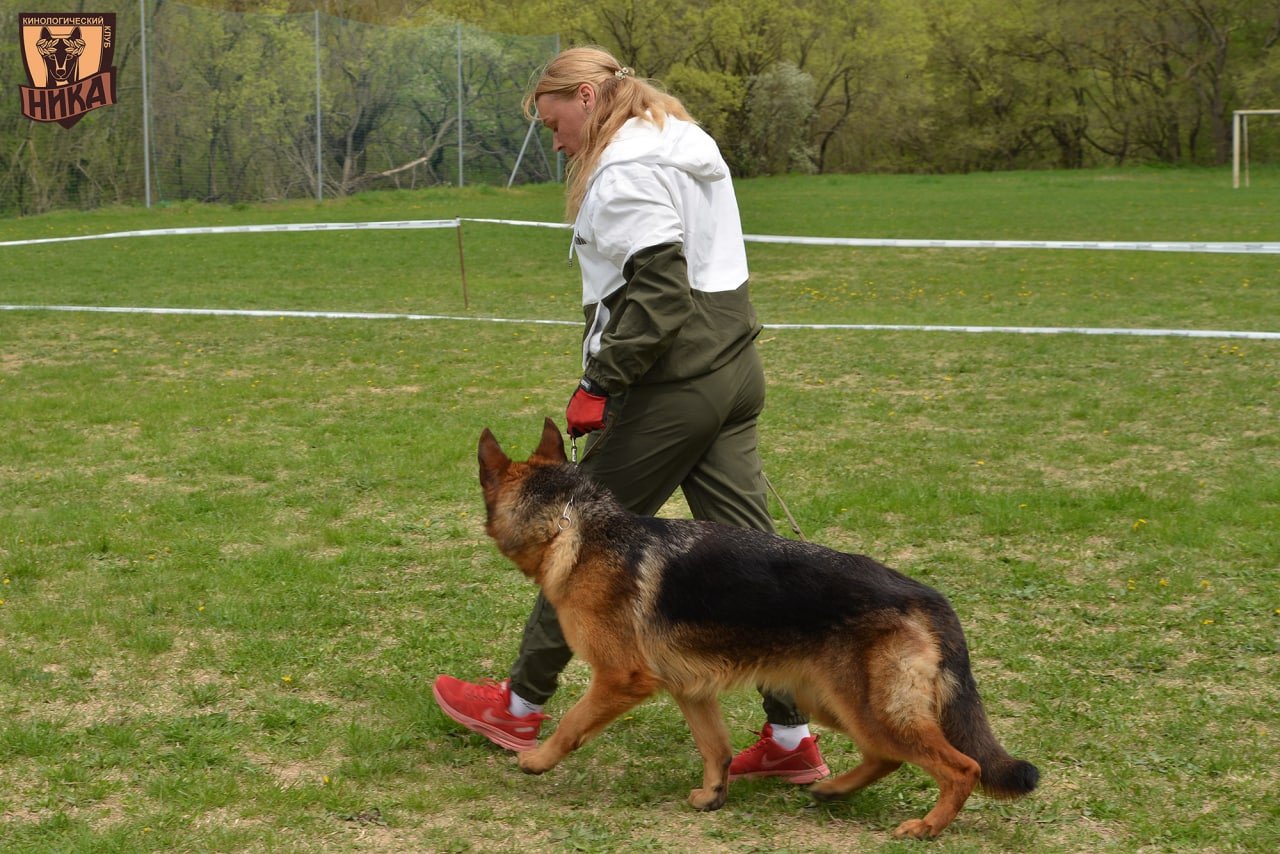
1. Decompression & Detraining
Before adoption, many retired working dogs undergo a “decompression period” where they gradually step down from high-intensity training. Handlers may:
- Replace bite work with puzzle toys.
- Reduce obedience drills in favor of free play.
- Introduce calm environments to lower stress levels.
2. Socialization Training
Since many working dogs are trained to be wary of strangers, controlled exposure is key. Rescue organizations often:
- Introduce them to friendly, unfamiliar people in low-pressure settings.
- Test their reactions to household noises (vacuum cleaners, doorbells, etc.).
- Slowly expose them to other pets if they’ll be living in a multi-animal home.
3. Handler-to-Adopter Handoff
A smooth transition depends on clear communication between the dog’s former handler and new family. Many programs include:
- Detailed behavioral assessments – Identifying triggers (e.g., loud noises, sudden movements).
- Trial periods – Ensuring the dog and family are a good fit before finalizing adoption.
- Ongoing support – Some organizations offer post-adoption training consultations.
Success Stories: From Duty to Domestic Bliss

- Rex, a former patrol dog, initially struggled with relaxation. His adopters used scent games (a familiar skill) to redirect his focus, and within months, he became a gentle companion.
- Lena, an explosives detection K9, was fearful of household appliances. Through gradual exposure, she learned to ignore blenders and washing machines—and now naps through vacuuming.
How Adopters Can Help
If you’re considering adopting a retired working dog:
Be patient – Transitioning can take weeks or months.
Provide structure – Maintain routines for feeding and exercise.
Use positive reinforcement – Reward calm behavior, not just obedience.
Stay in touch with trainers – Many groups offer lifelong support.
Closing Statement
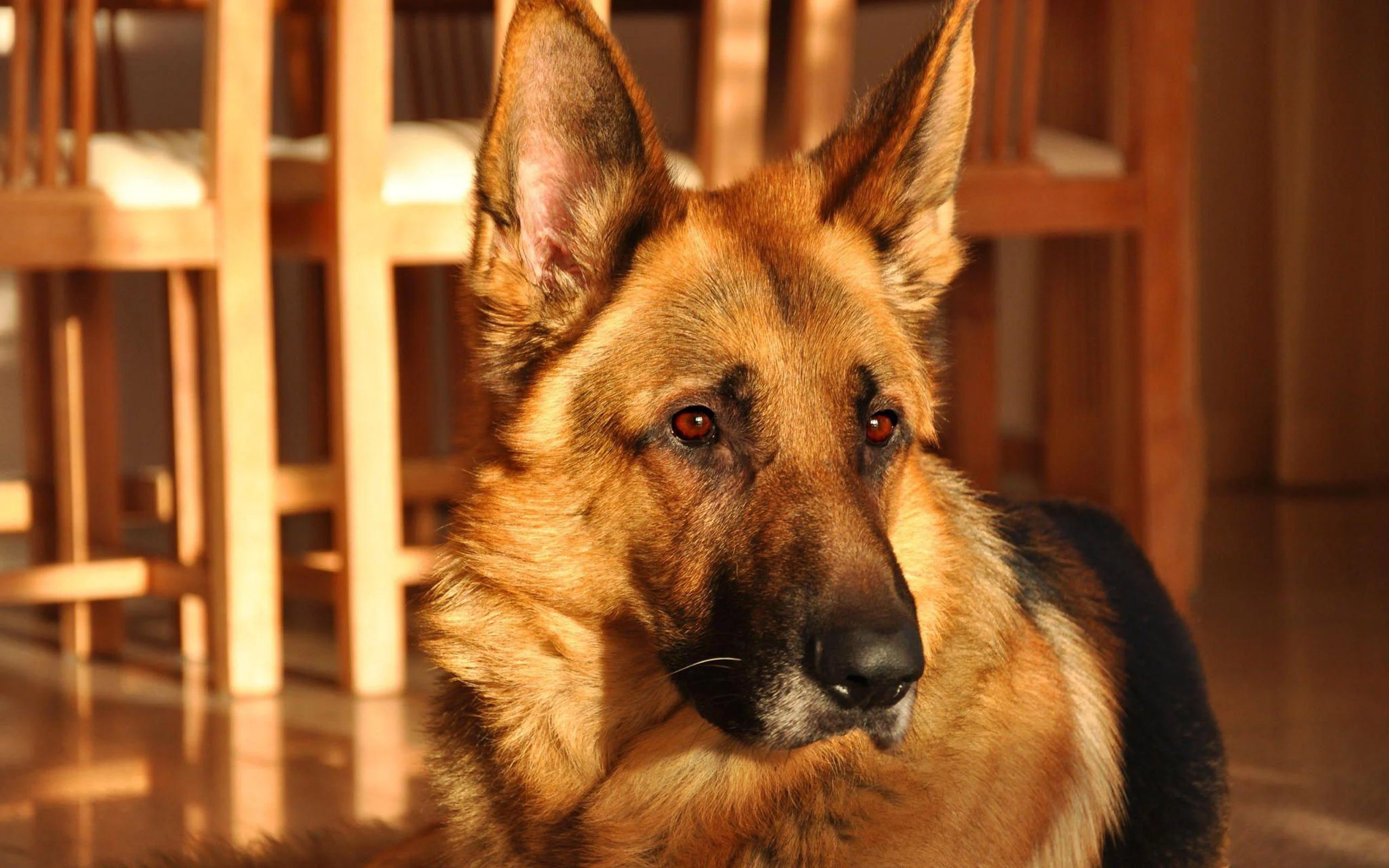
Retirement should be a reward—not a struggle—for dogs who’ve spent years in service. With the right training and support, these intelligent, loyal animals can thrive in their new roles as beloved family members.
Interested in adopting a retired K9? Reach out to organizations like Mission K9 Rescue or Save a Vet to learn more about available dogs and their needs.
You Might Also Like:
- “From Duty to Family: How Retired Police & Military German Shepherds Find New Purpose”
- “The Science Behind a Working Dog’s Training: What Makes Them So Exceptional?”
Frequently Asked Questions (FAQs)

1. How long does it take for a retired working dog to adjust to home life?
The adjustment period varies—some dogs adapt within weeks, while others may need several months. Factors like the dog’s age, length of service, and temperament play a role. Patience and consistency are key.
2. Are retired police/military dogs aggressive?
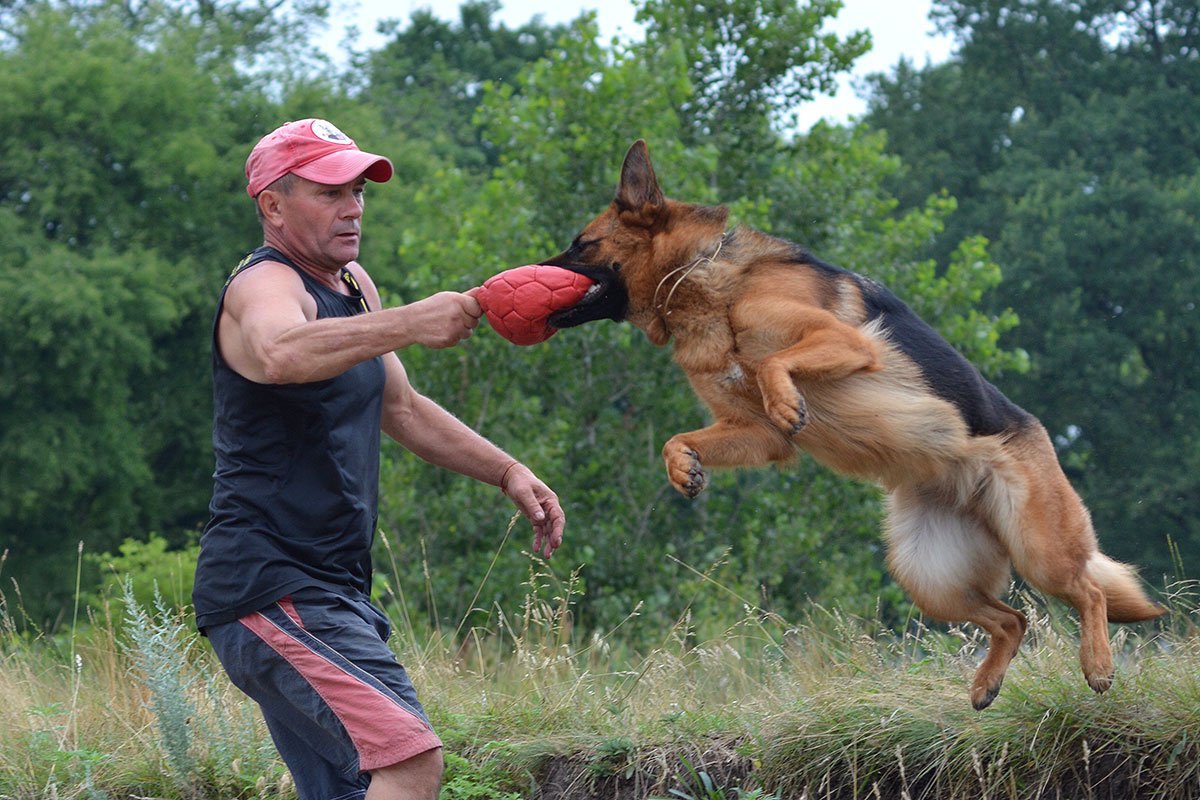
Not inherently. These dogs are trained to follow commands precisely, but they may have heightened instincts (e.g., suspicion of strangers). Proper decompression and socialization usually mitigate any unwanted behaviors.
3. Can retired K9s live with children or other pets?
Many can, but introductions should be slow and supervised. Some dogs adapt quickly, while others may need ongoing training. Organizations typically assess a dog’s compatibility before adoption.
4. Do retired working dogs need special medical care?
They may have wear-and-tear injuries (e.g., hip dysplasia, arthritis) from their service. Adopters should budget for potential vet visits and consider pet insurance.
5. What’s the best way to train a retired K9 at home?
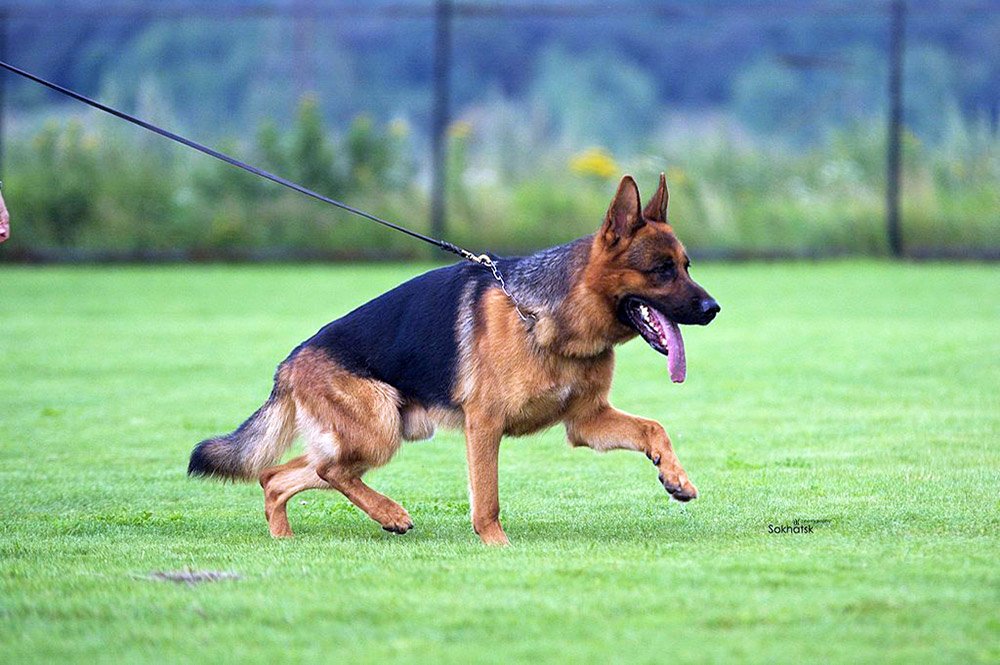
- Use positive reinforcement (treats, praise) rather than harsh corrections.
- Keep training sessions short to avoid frustration.
- Incorporate mental stimulation (scent games, puzzles) to replace their “job.”
6. Where can I adopt a retired police or military dog?
Reputable organizations include:
- Mission K9 Rescue
- Save a Vet
- Local law enforcement K9 units (some facilitate adoptions directly).
7. Are these dogs good for first-time owners?
They can be, but they often require an experienced or committed adopter familiar with large, high-energy breeds. First-time owners should work closely with trainers.
8. Do retired working dogs make good emotional support animals?
Some do, especially if they’ve been retrained for calm environments. However, their natural alertness may not suit all ESA needs—evaluate the individual dog’s temperament.
Want to learn more? Check out our related article: “From Duty to Family: How Retired Police & Military German Shepherds Find New Purpose.”
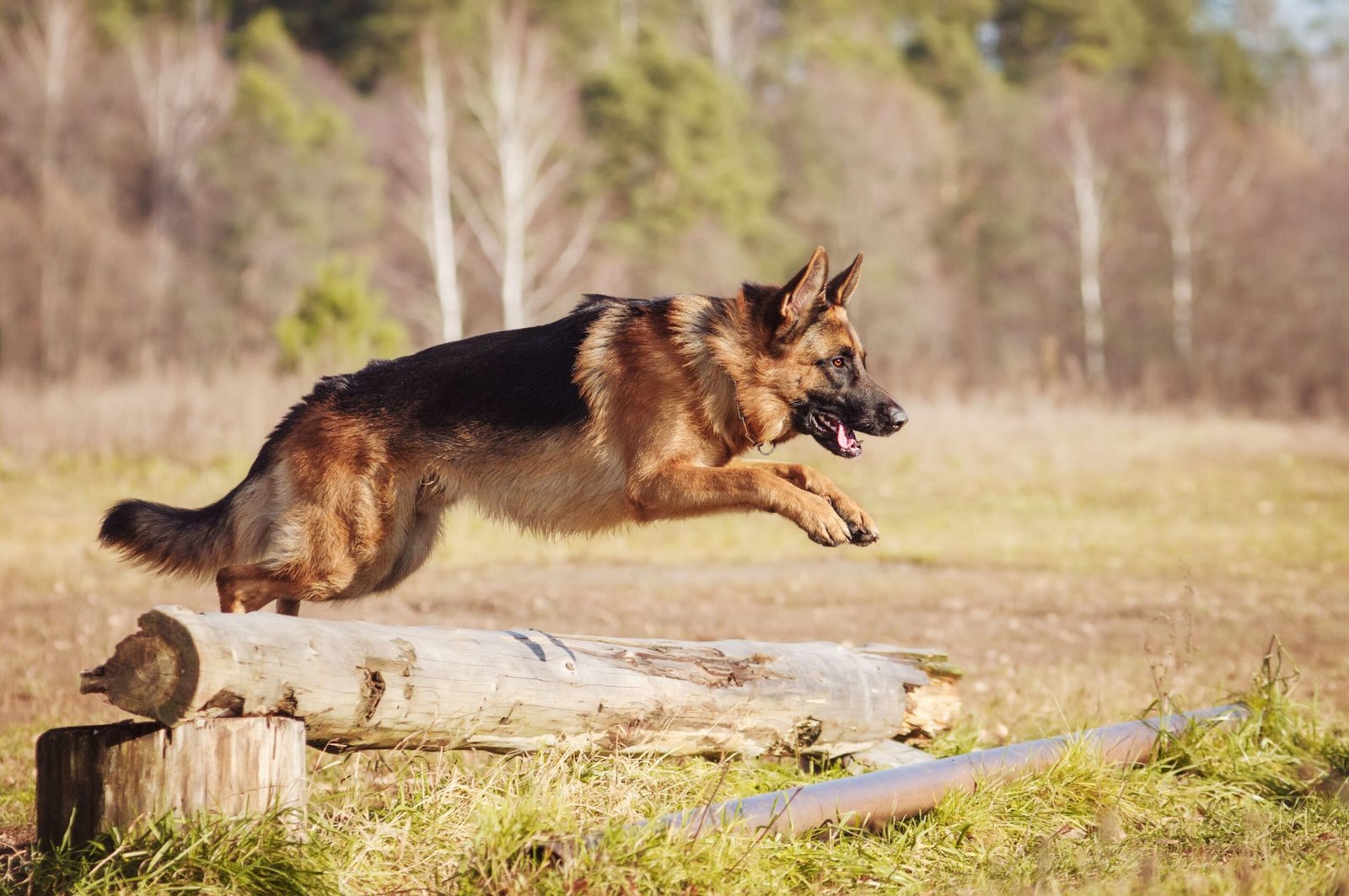
-

 SMALL DOG BREEDS5 months ago
SMALL DOG BREEDS5 months agoMerle Chihuahua: A Comprehensive Guide
-

 SMALL DOG BREEDS5 months ago
SMALL DOG BREEDS5 months agoMaltese: A Beloved Companion
-

 Large Breeds4 months ago
Large Breeds4 months agoSamoyeds Hypoallergenic: Closer Look at the Breed
-

 SMALL DOG BREEDS5 months ago
SMALL DOG BREEDS5 months agoMerle Pomeranian: A Adorable Companion
-

 Large Breeds4 months ago
Large Breeds4 months agoStandard Poodle Weight: Country Wise
-

 MEDIUM BREEDS4 months ago
MEDIUM BREEDS4 months agoAmerican Water Spaniel Colors Chocolate In Crcols:
-

 SMALL DOG BREEDS5 months ago
SMALL DOG BREEDS5 months agoYorkshire Terrier: a Big Personality
-

 Terrier Breeds3 months ago
Terrier Breeds3 months agoDog Breeds: by Country & Category

